Roots and Ruins: Exploring the Archaeological Secrets of the Quíbor Museum - Part 2 [En-Es]
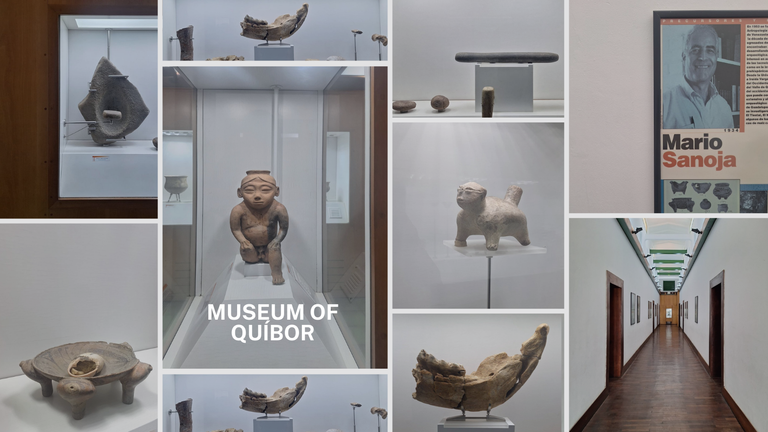
Every journey is a story. A story can be structured in parts or chapters, but the most important thing is that the author pours their soul into every word. I want to begin this adventure with that belief—the one that brought me here. To fully understand this story or second part, I invite you to read the first part through the following link: Forgotten Treasures: Exploring the Mysterious Museum of Quíbor – Part 1. I wrote this while listening to the song "I'll Never Love Again" by Lady Gaga.
Visiting the Museo Antropológico Francisco Tamayo Yépez in Quíbor was one of the best experiences I’ve had—mainly because of everything I lived through. In the first post, I wrote about my exploration from the lobby through exhibition halls 1, 2, and 3. In this one, I want to show you history, roots, essence, and a small piece of Venezuela. Yes—history and civilization.
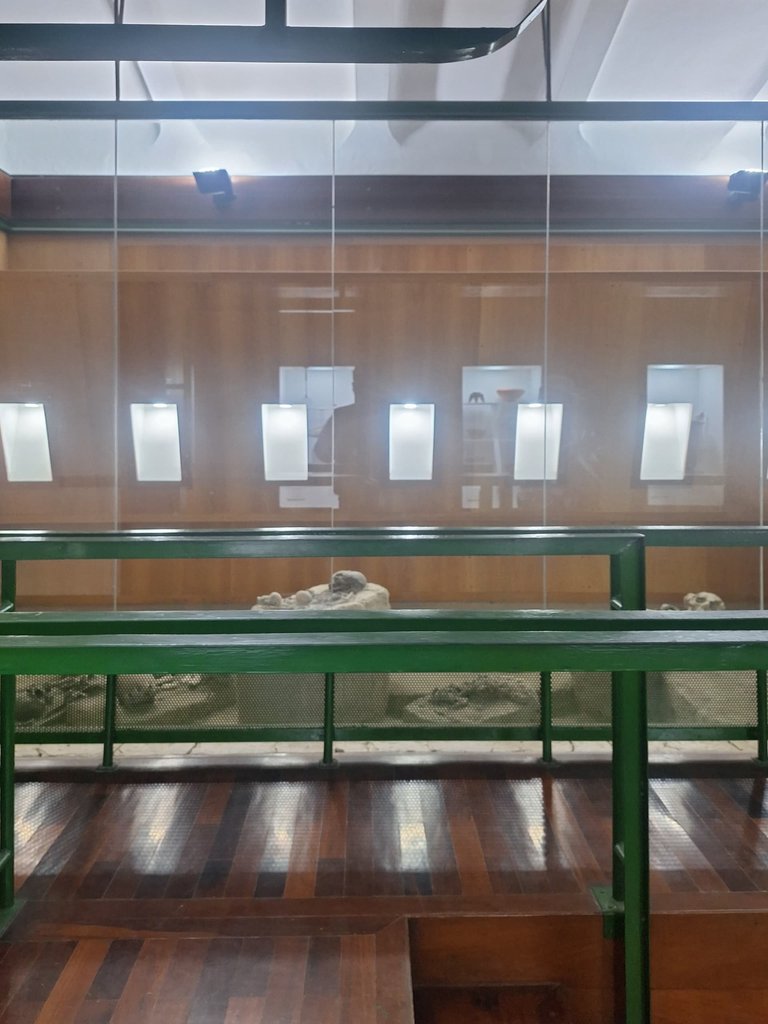
After viewing the tombs and fossilized human bones in Hall 3, I entered Hall 4. This hall welcomes you with a male andromorphic figure. The piece was found in Rincón de Guardia, a lowland area in Quíbor, located in Lara State, Venezuela.
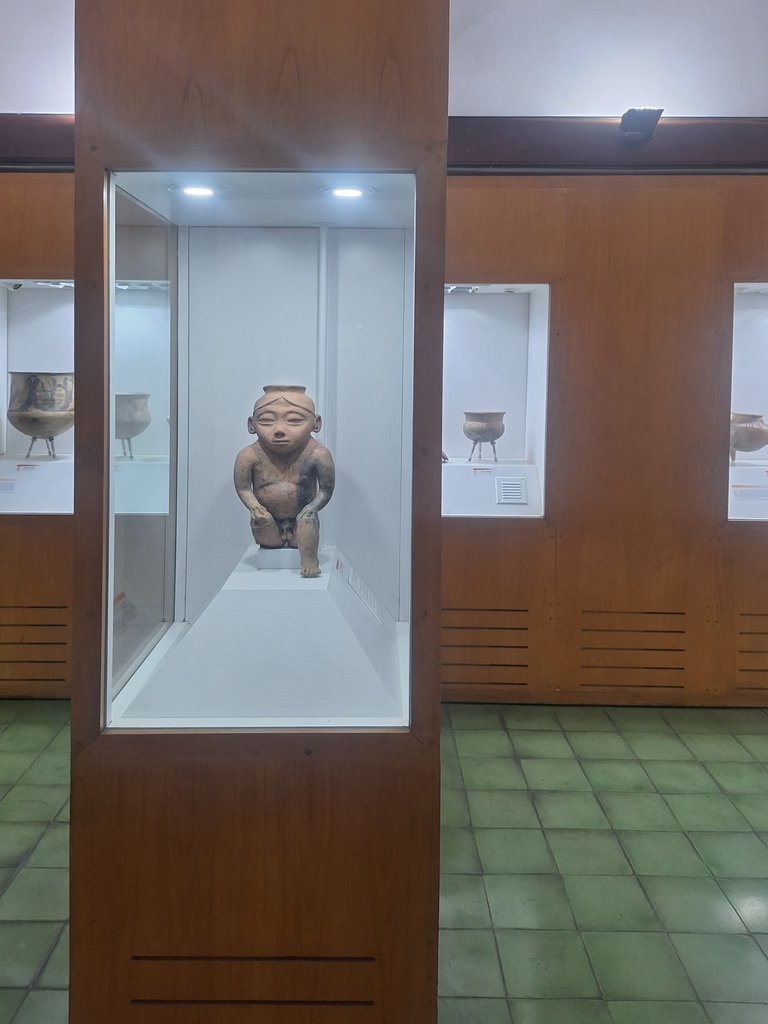 | 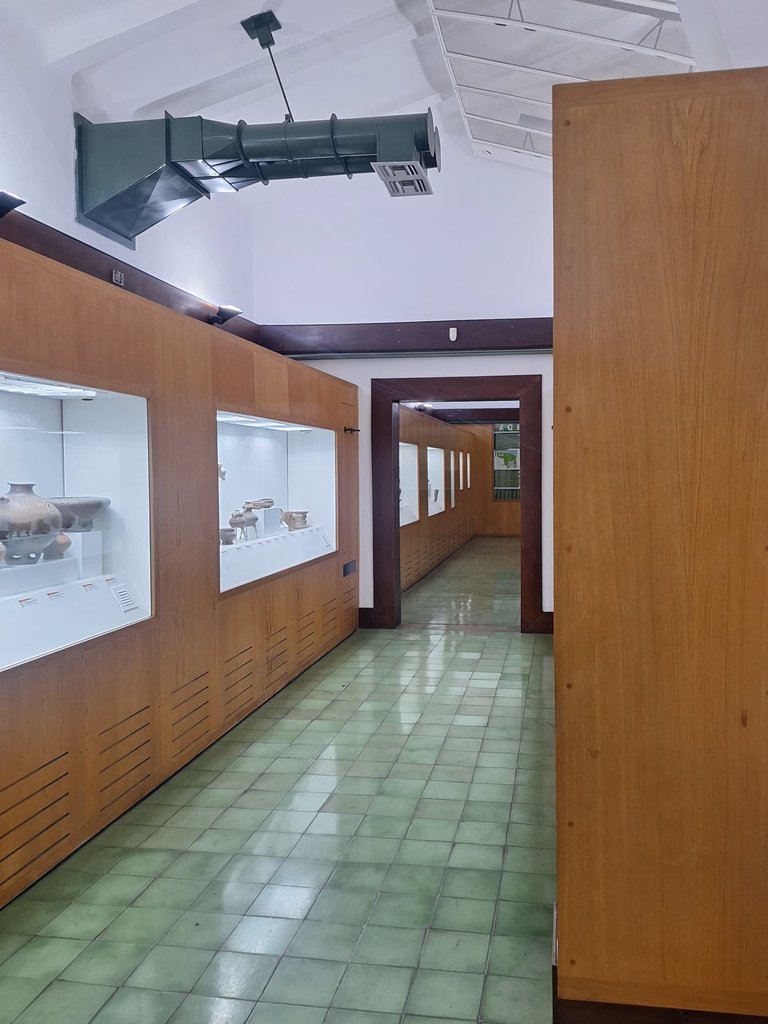 | 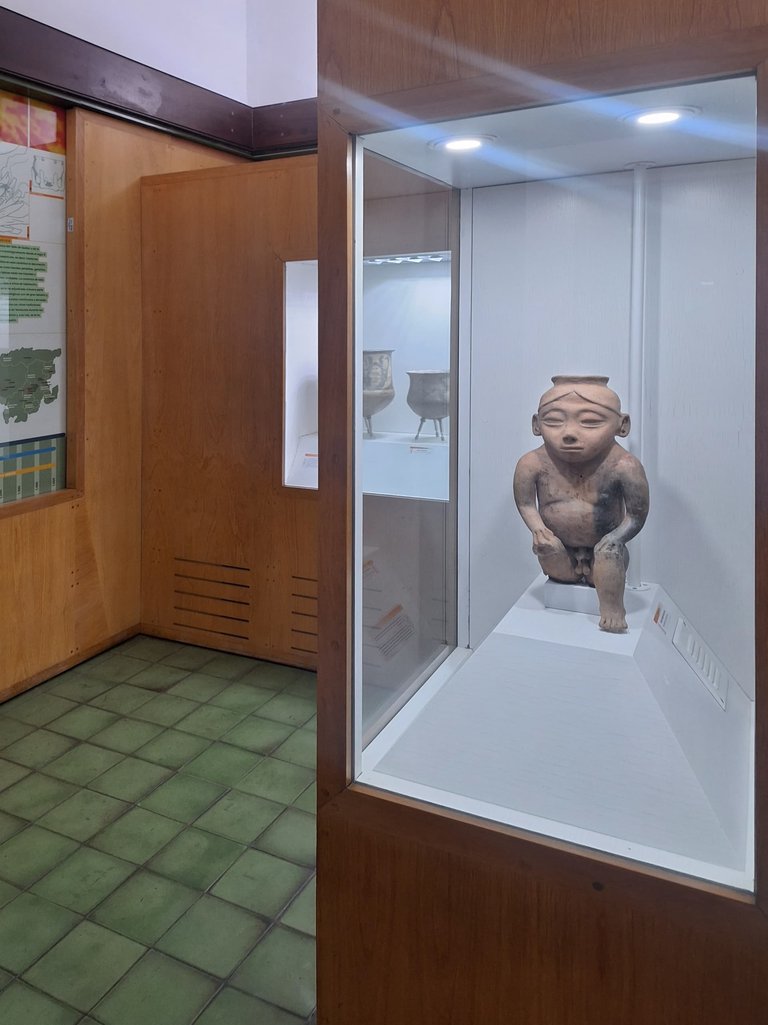 |
According to the museum records, the piece is between 1,500 and 1,800 years old (quite a long time). It was found in a cemetery and apparently served a ceremonial or respectful purpose.
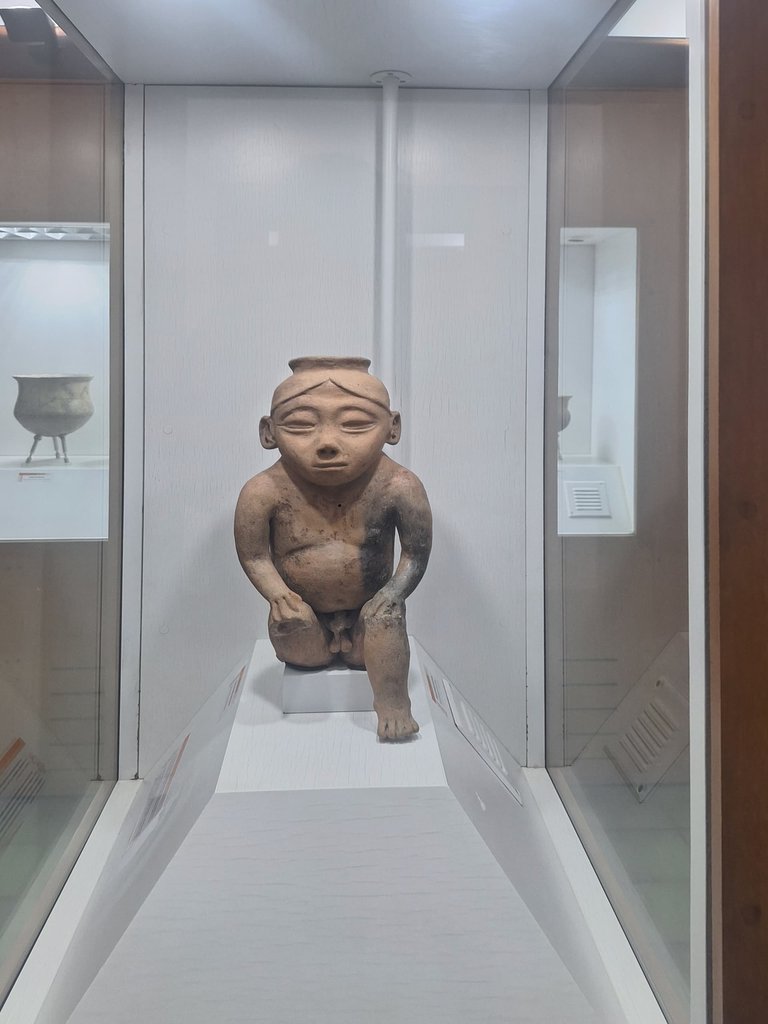
This is one of the most detailed archaeological pieces in the museum—you can clearly appreciate the finishing, outlines, and coloring. I loved that it was displayed in a way that allowed you to view it from all angles.
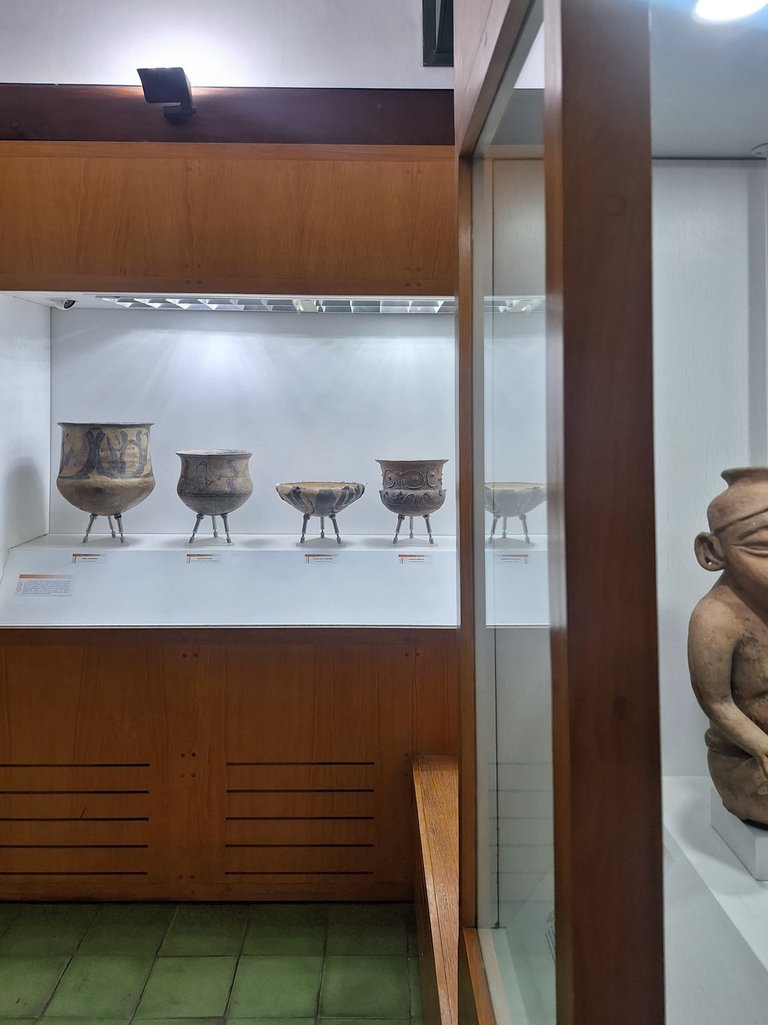 | 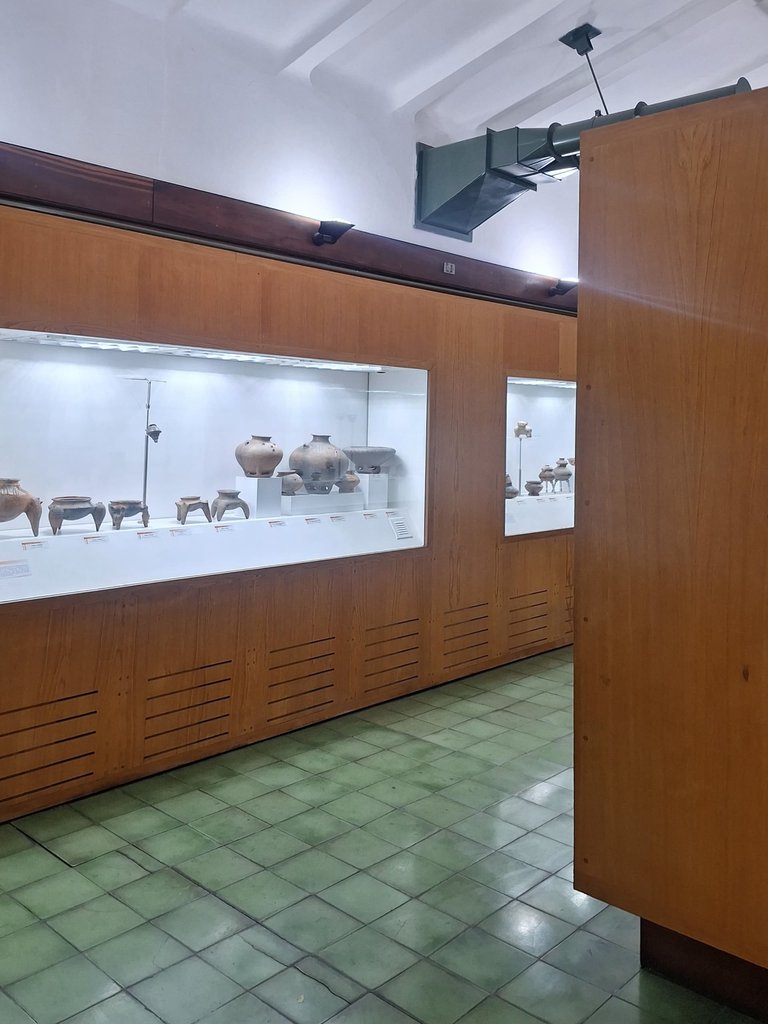 | 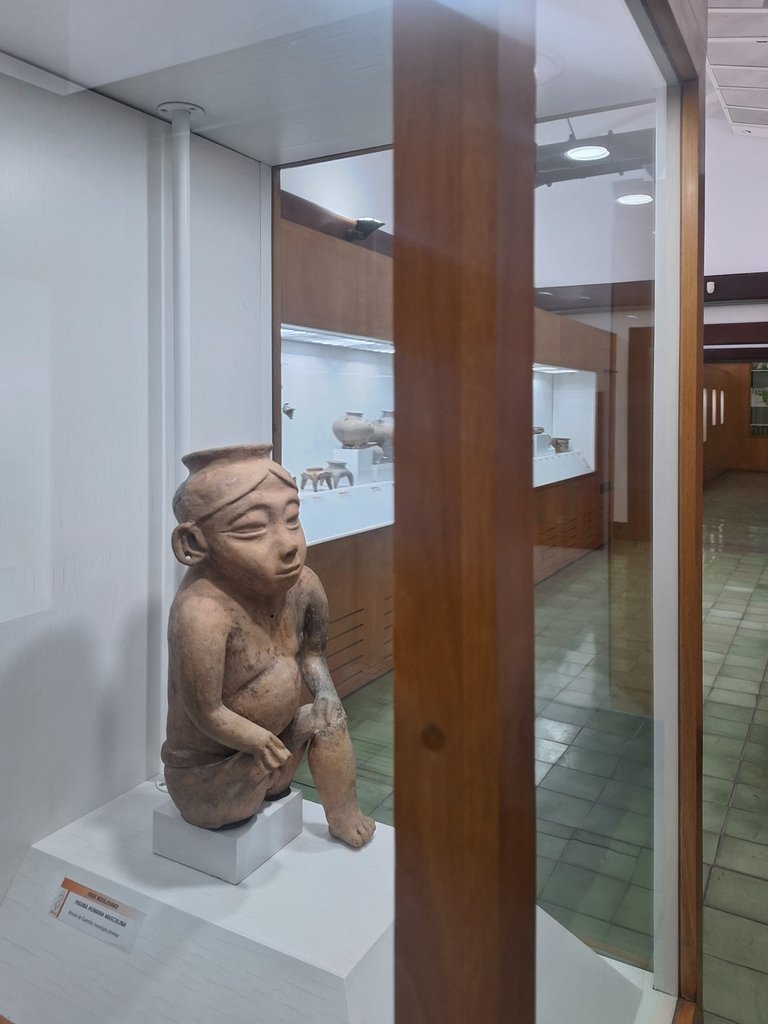 |
Hall 4 is spacious and connects directly to Hall 5. The items on display are stunning. Behind the andromorphic figure, displayed in a simulated manner, were funerary urns, a tetrapod vessel, a globular vessel, and a pentapod bowl with a conch shell, among others.
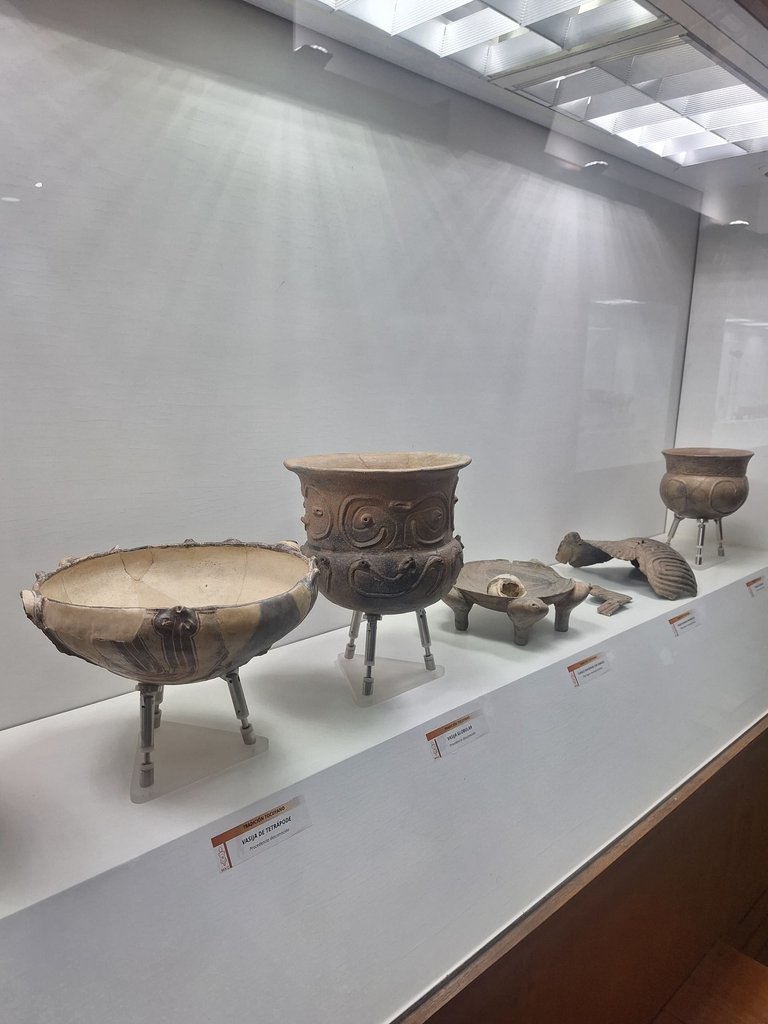 | 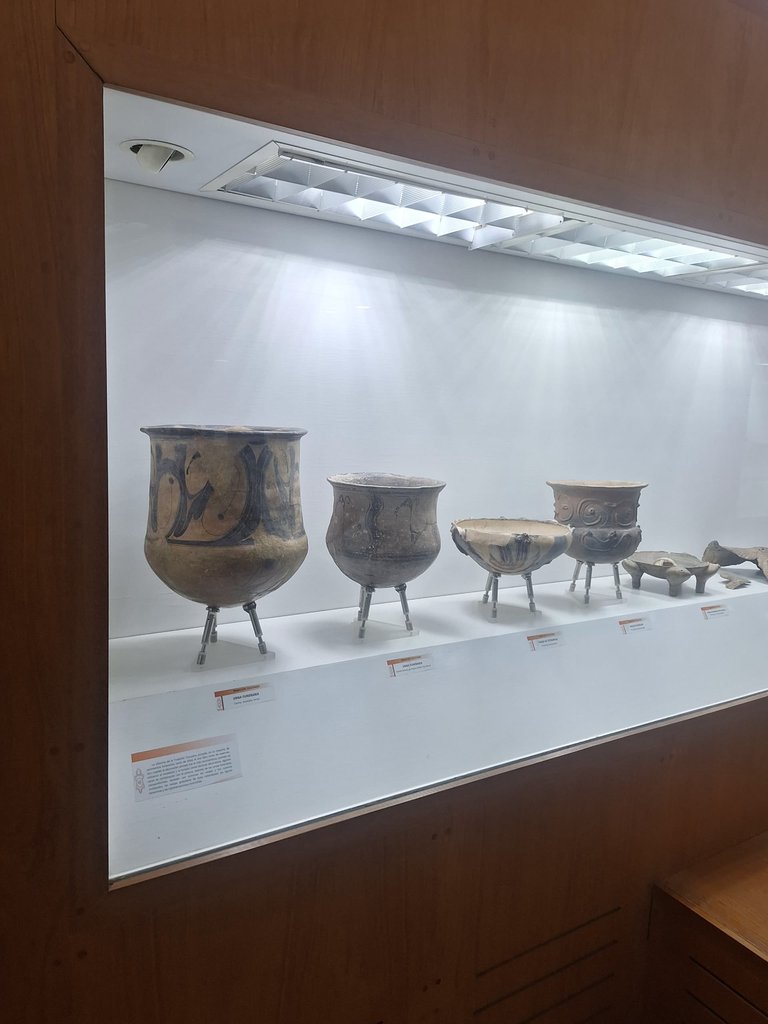 | 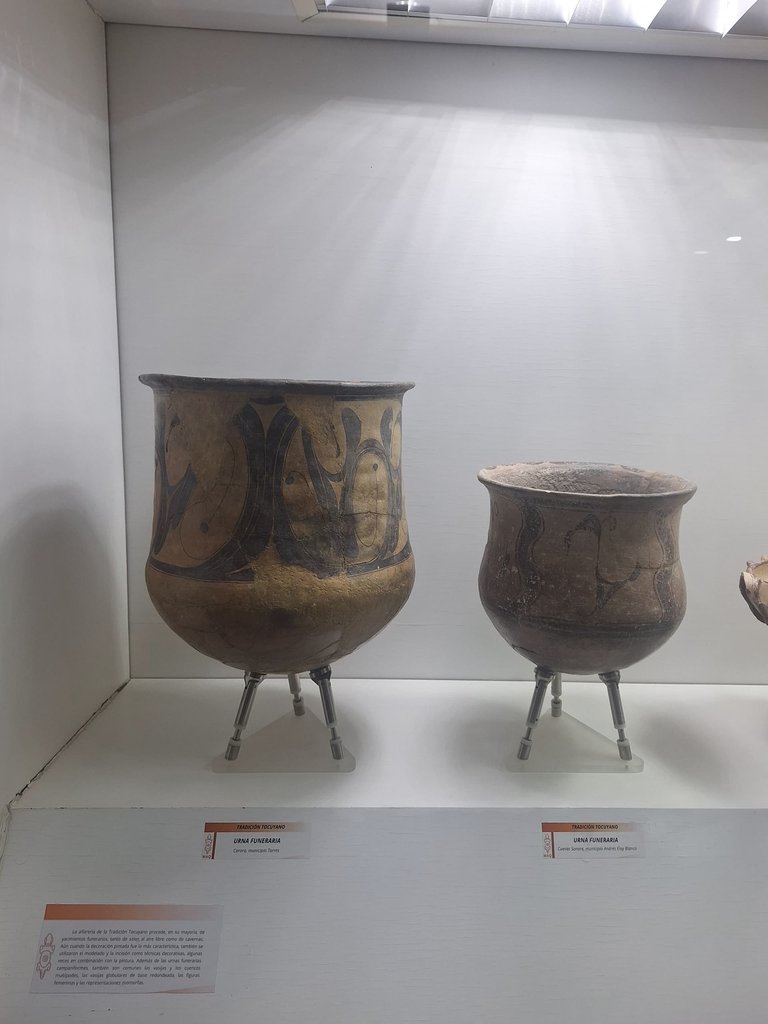 |
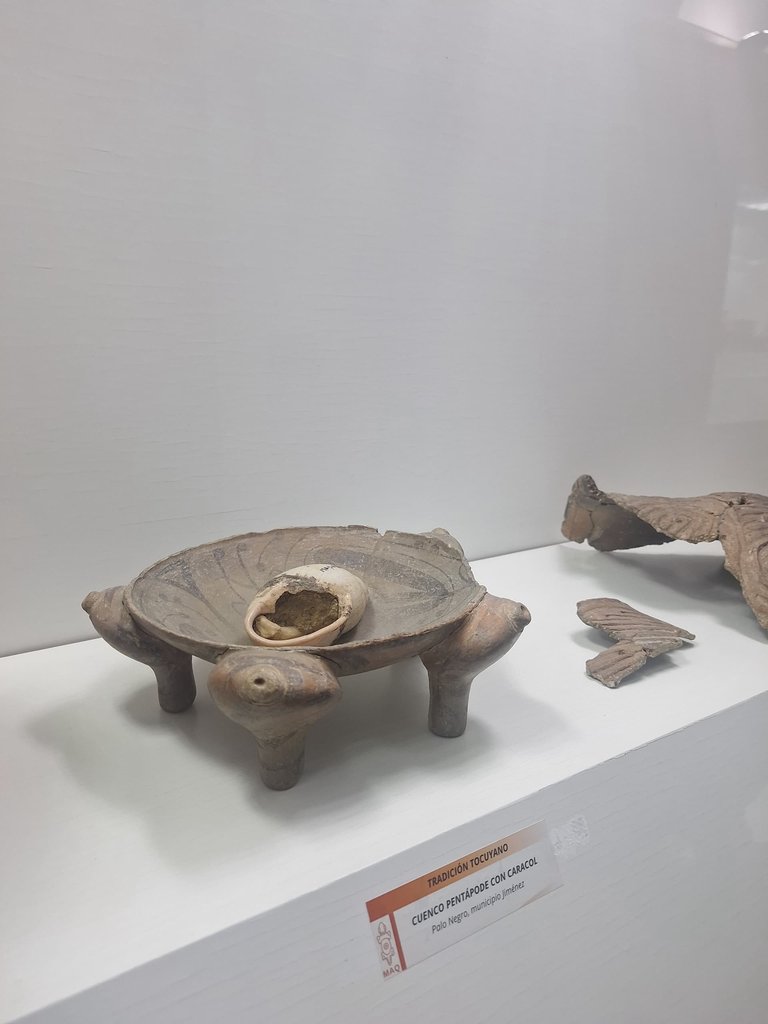 | 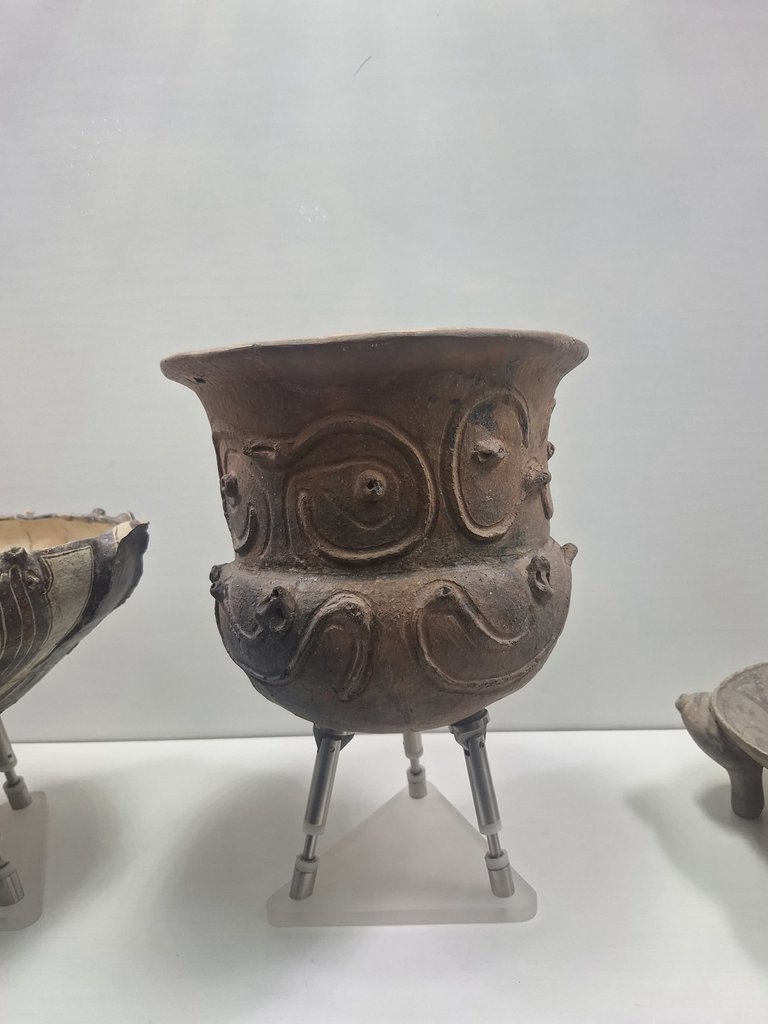 | 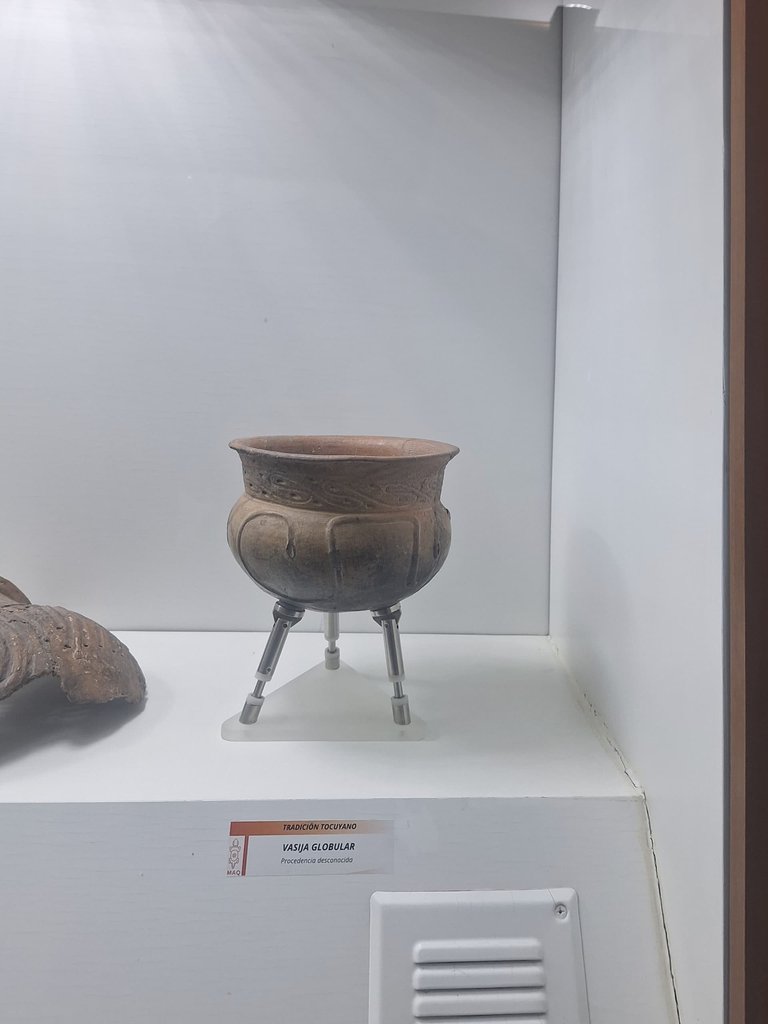 |
Out of all these, the tetrapod vessel, the globular vessel, and the pentapod bowl with the conch shell were the most impressive. Each one was beautifully detailed. The bowl, although not in perfect condition, stood out for its remarkable beauty.
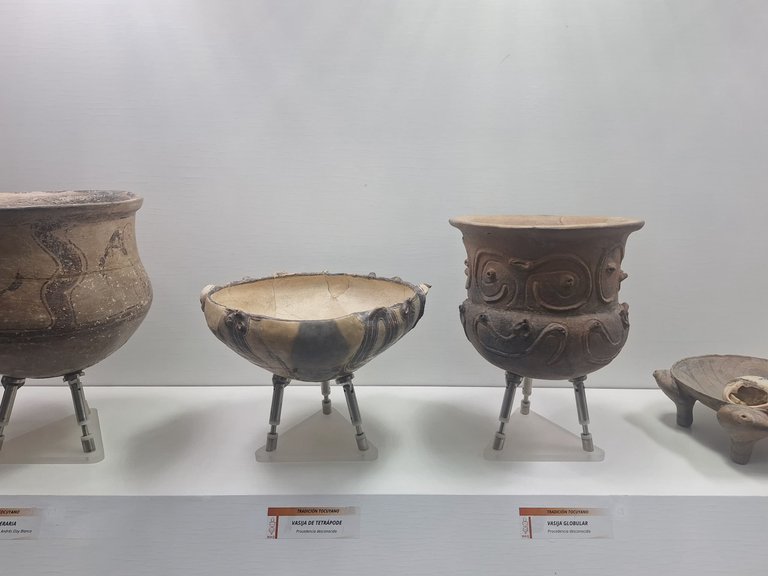
In another display case, there were various tripod vessels. Each one had a different, yet appealing design. There is actually a monument in Quíbor representing one of these vessels, which I’ve written about previously.
 | 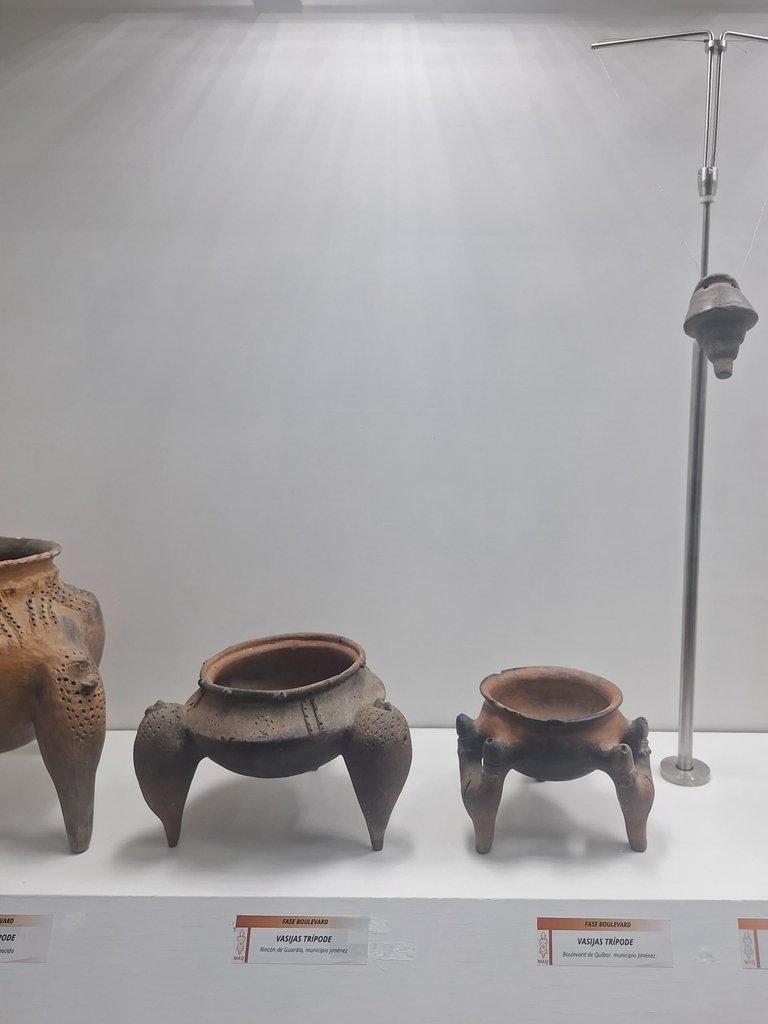 | 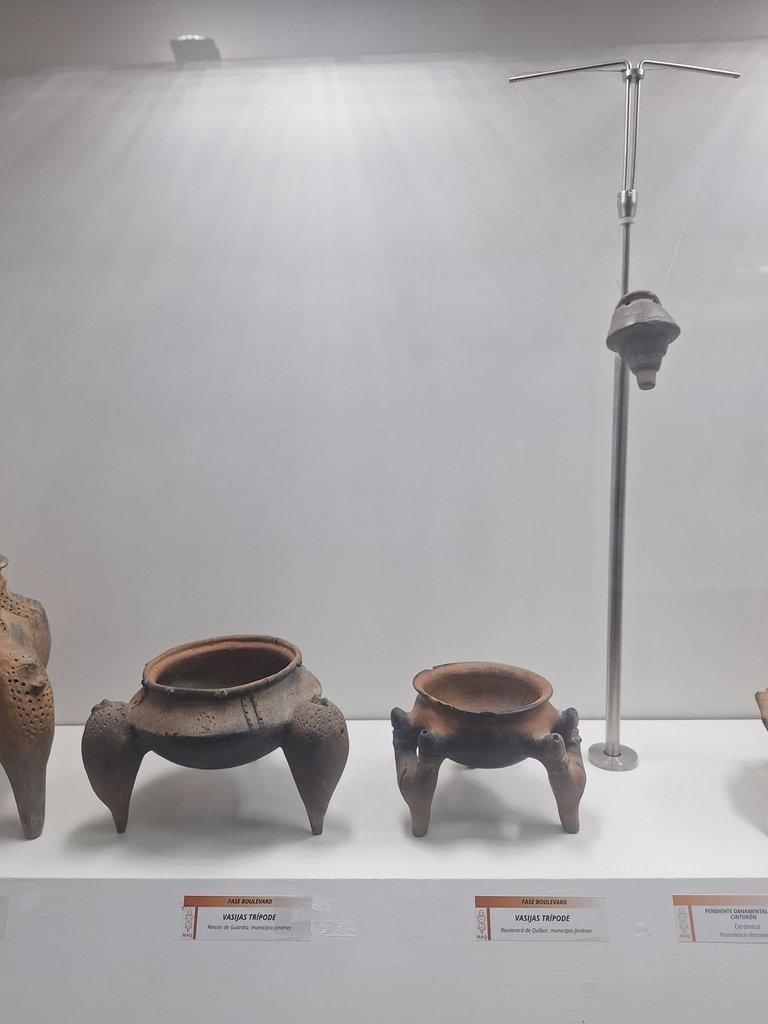 |
Take a look at the next photo and appreciate the harmony with which the tripod vessels are arranged. For some reason, they radiate power.
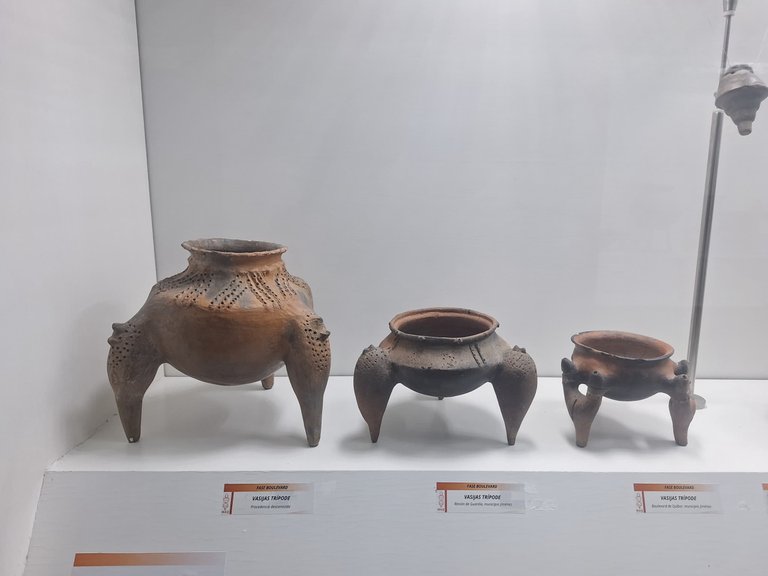
Hall 4 was the largest hall in the museum. In another display case, there were globular vessels with windows, pedestals, and human face silhouettes. The designs were deeply intriguing.
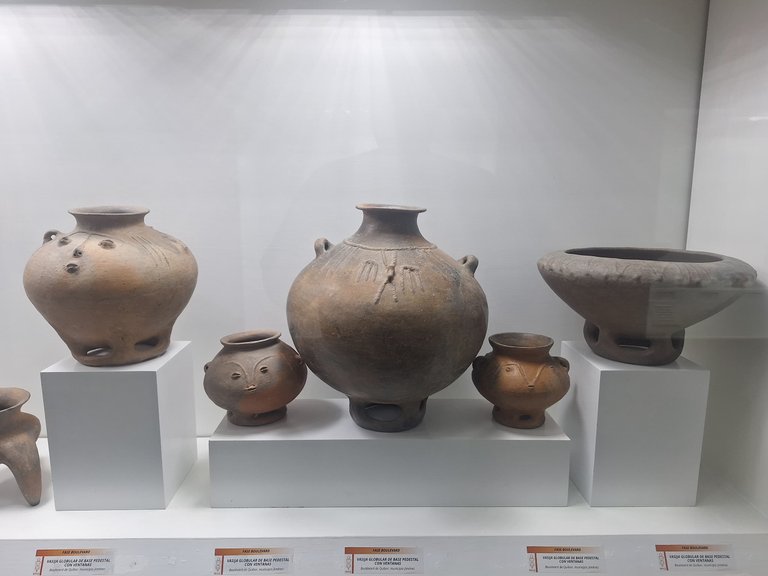
The variety and quality of the works were impressive. The only downside was the use of paper labels for descriptions, which diminished the artistic elegance. In the next few photos, you’ll see more tripods in different forms, rounded vessels, pedestals, bowls, and human-like faces.
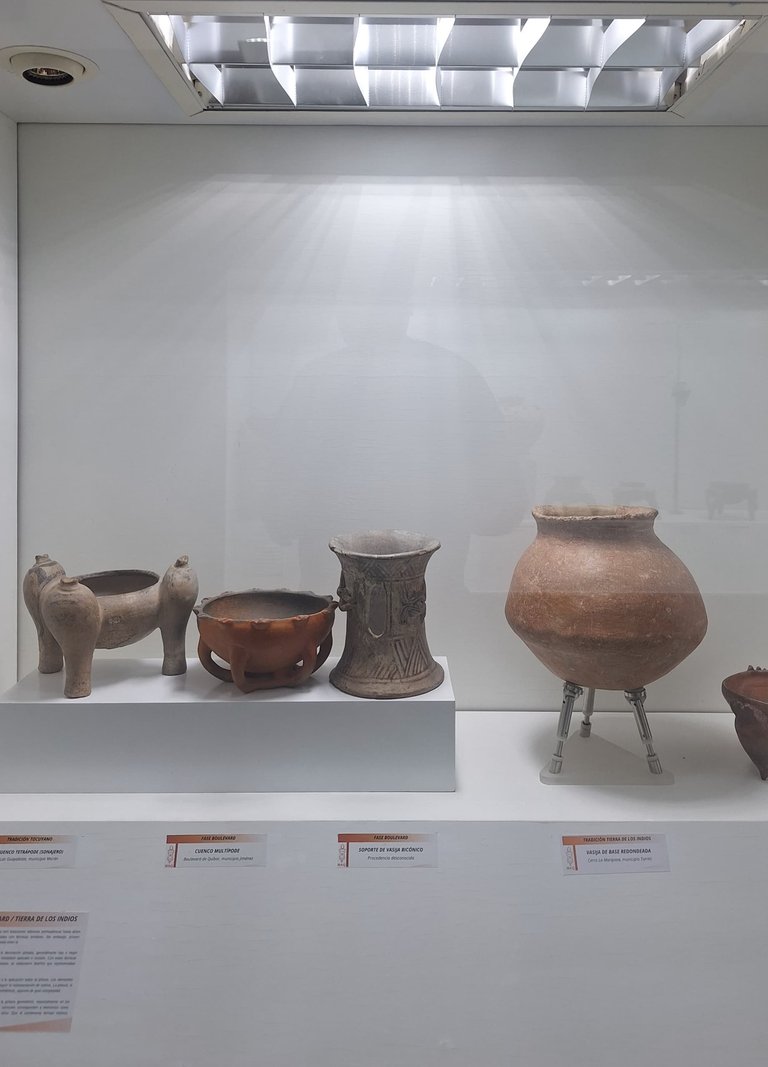
I then reached one of the most stunning parts of Hall 4—a display case full of anthropomorphic figures, each more fascinating than the last. Some were shaped like vessels or bottles, others aimed to represent the human form.
 | 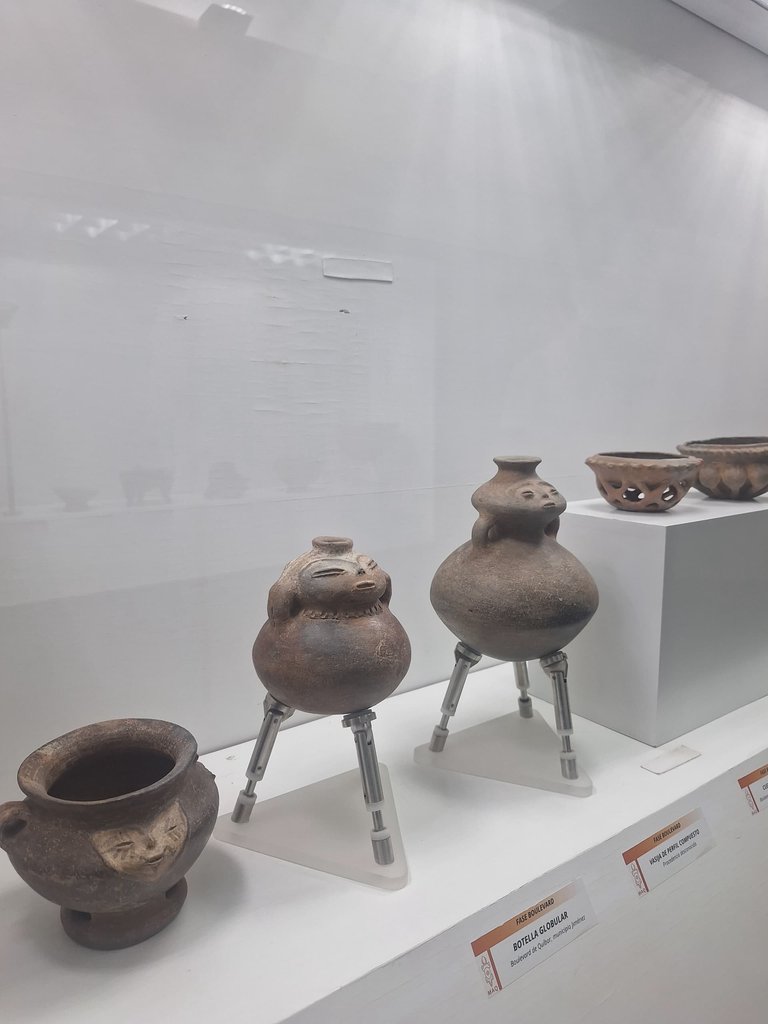 | 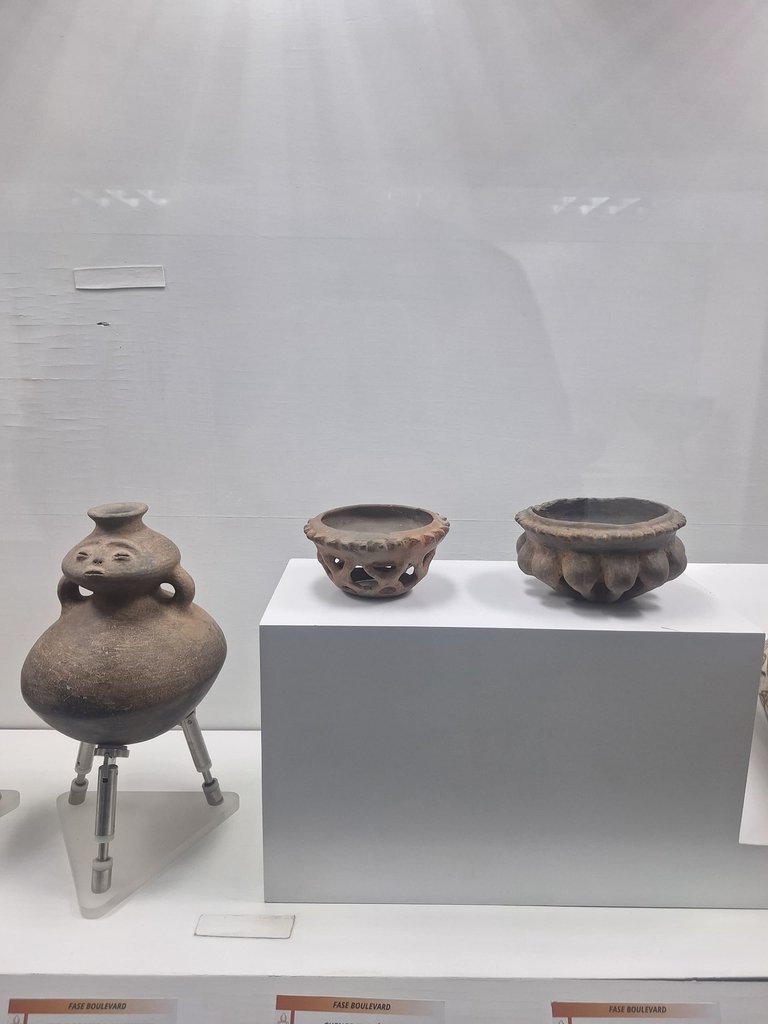 |
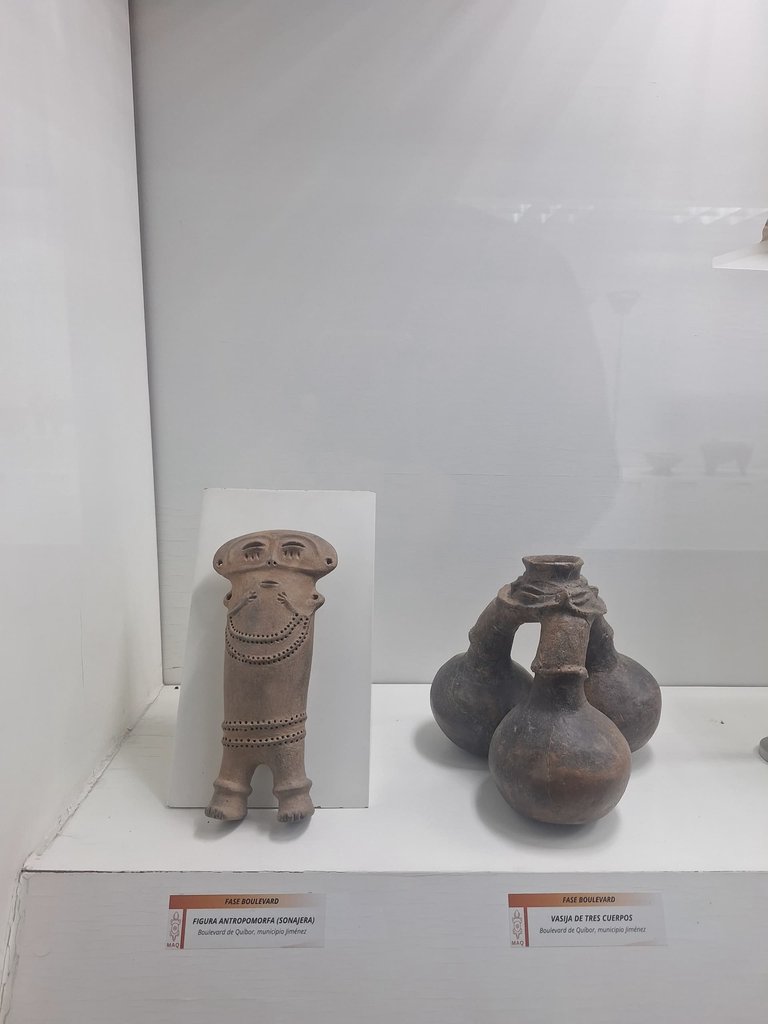 | 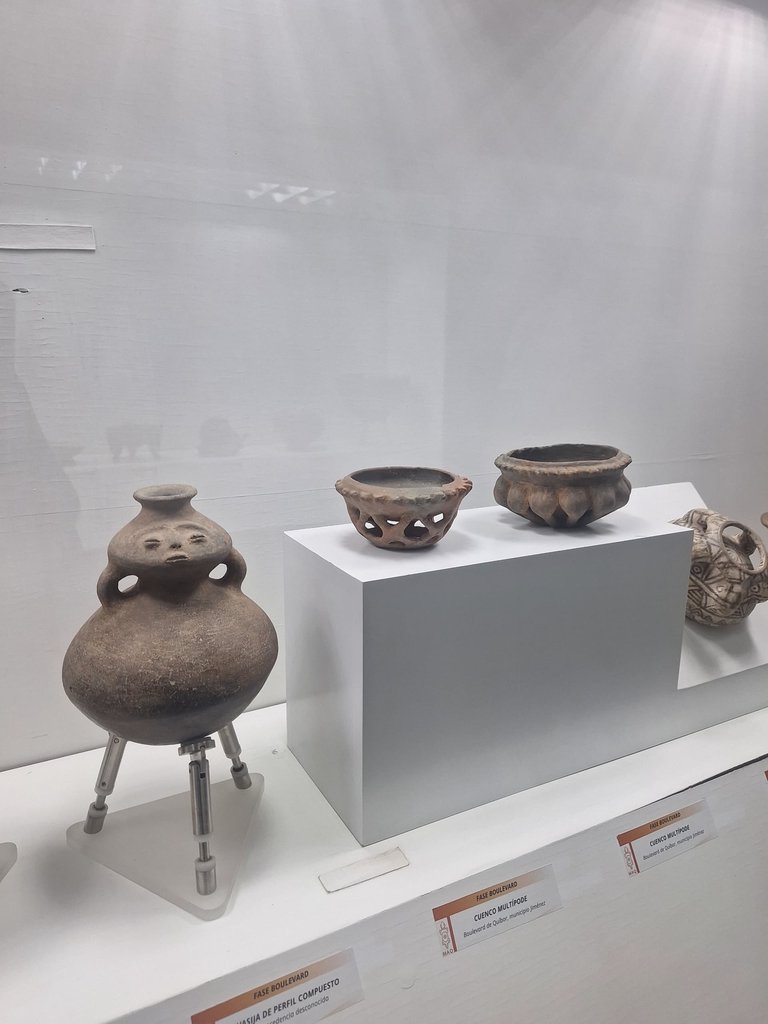 | 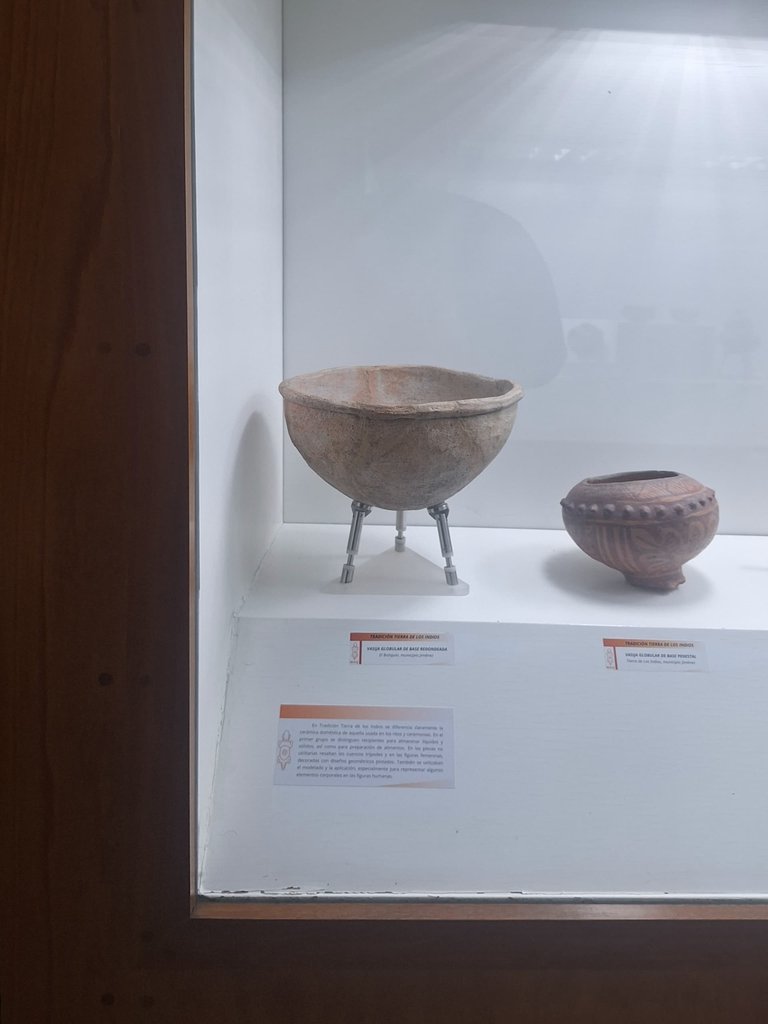 |
My favorite piece was a zoomorphic effigy vessel in the shape of a feline. This white-colored vessel was incredibly eye-catching, not just for its display, but for its inherent beauty. Its shape made me ponder which animal it might represent.v
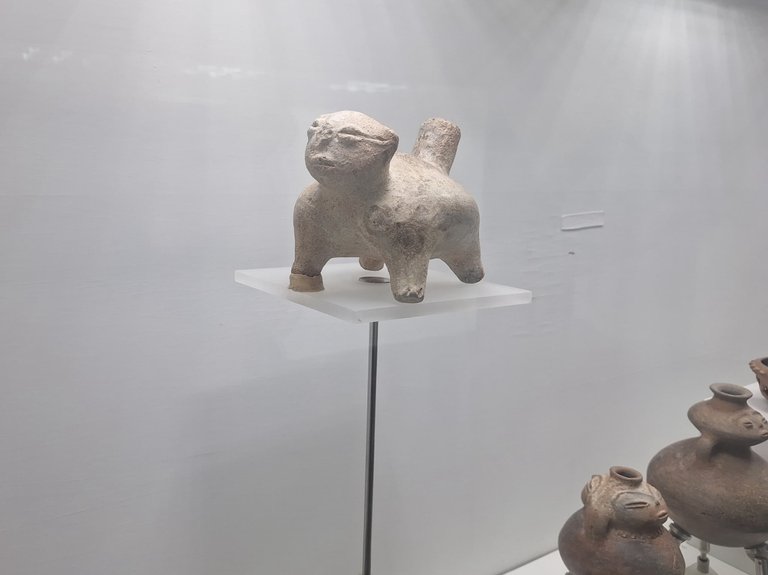
I have to admit—I was captivated by this piece. It was one of the most striking works in Hall 4. It's fascinating that it’s a vessel and not a carved sculpture.

After admiring everything in Hall 4, I moved on to Hall 5, which featured metallic and fossilized objects. The space was wide and included a model and an informational panel at the end.
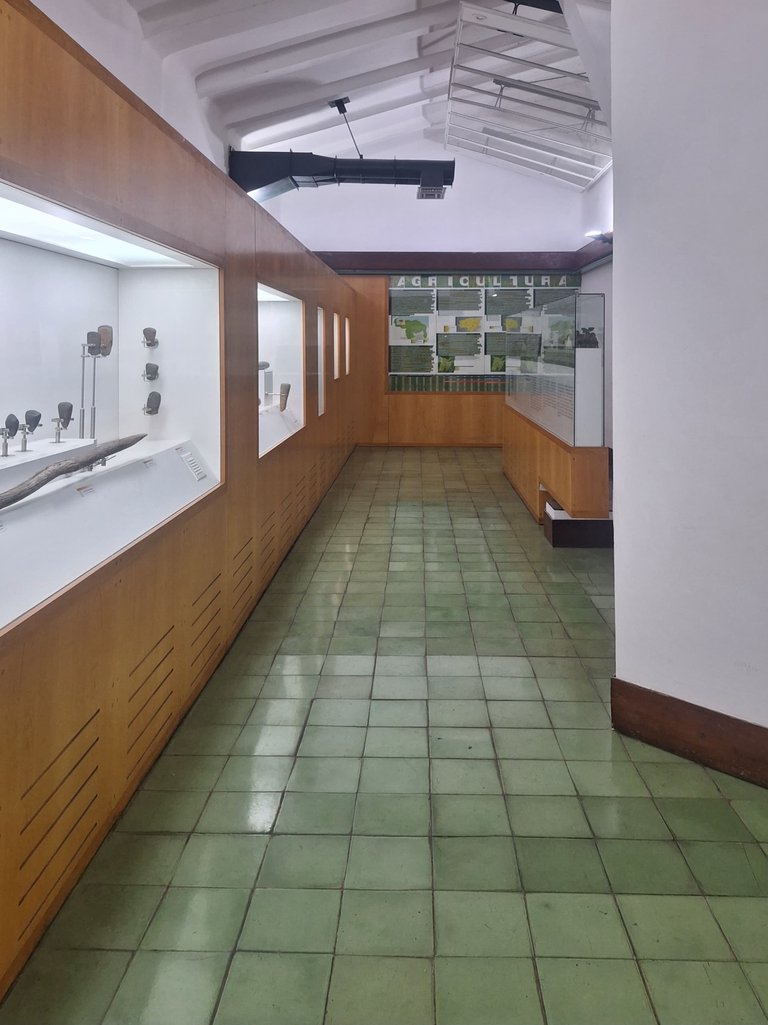
This photo captures the essence and elegance of the exhibits in this hall. It may not be perfect, but it conveys the striking atmosphere of the space. There were mortars and a coa (a planting stick), which was massive.

Hall 5 also had a metate, round and cylindrical grinding stones. It’s amazing how indigenous peoples used these tools for food preparation. Their traditions and cultural essence are well preserved in this museum.
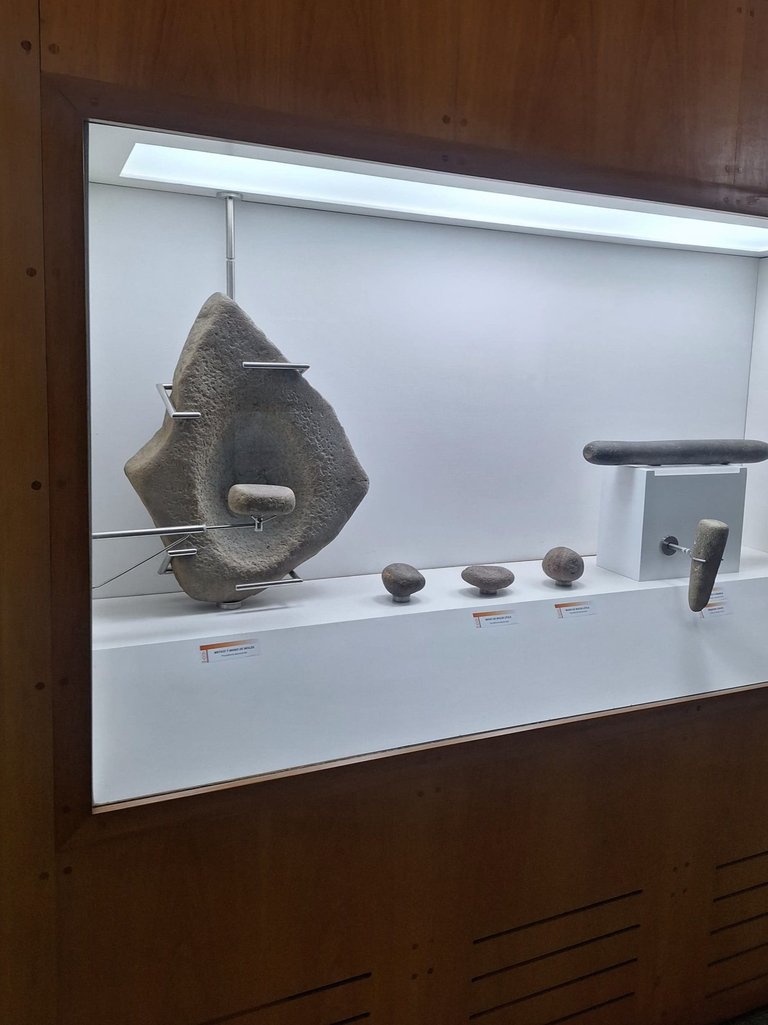 | 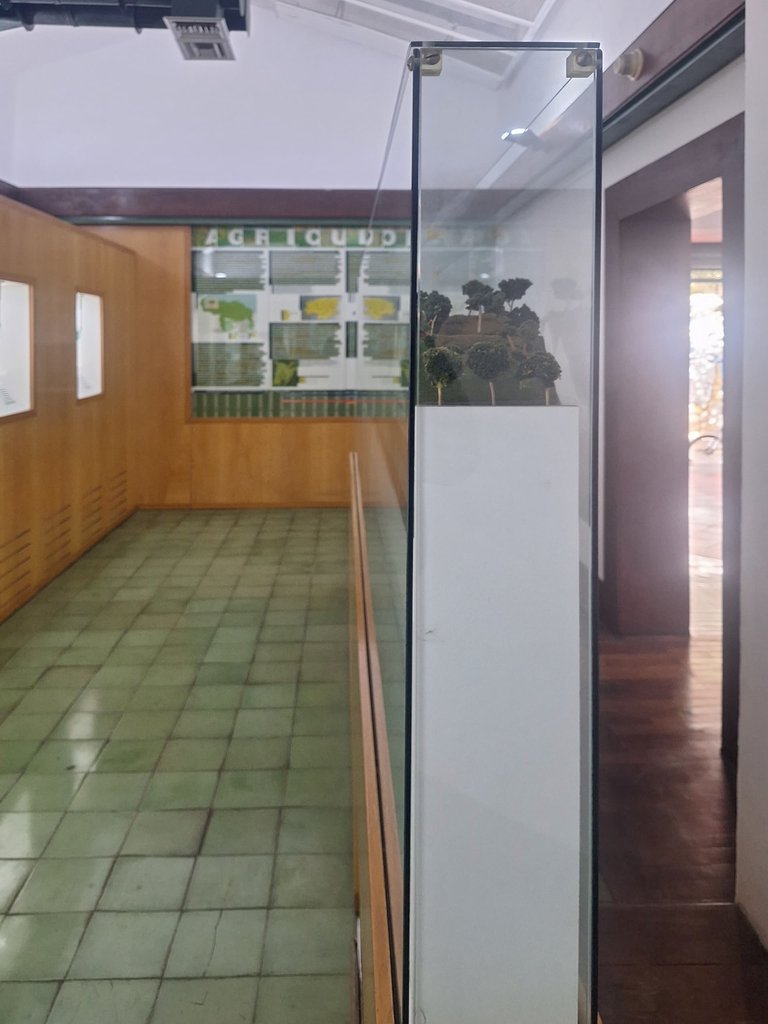 | 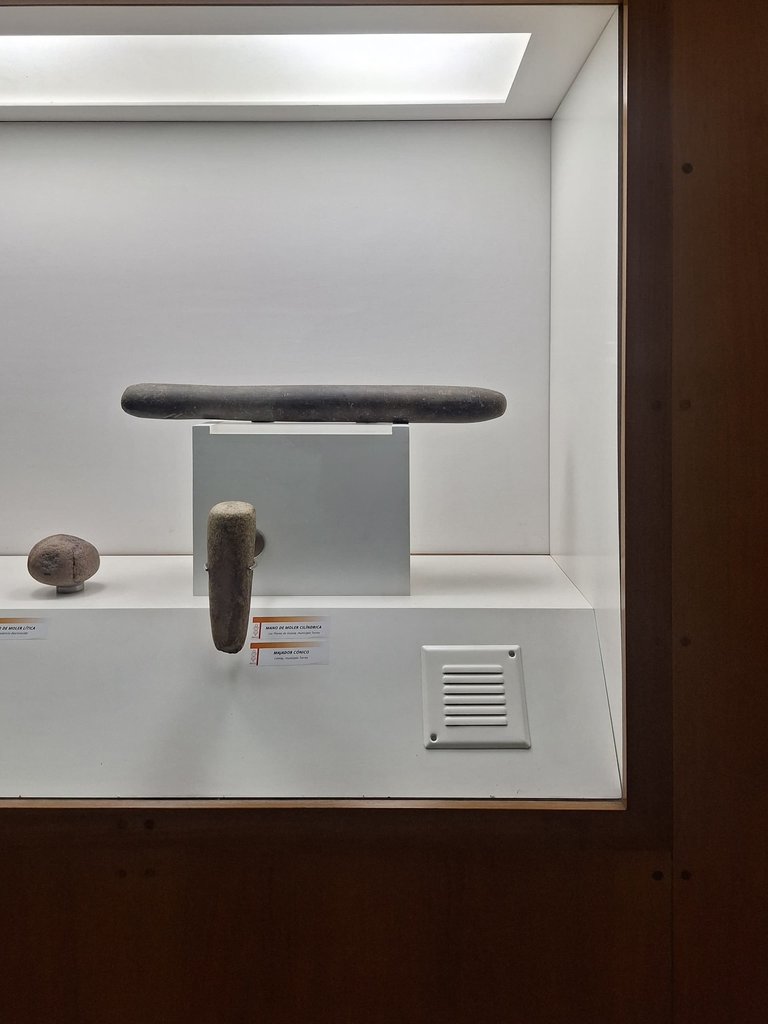 |
I’ve included photos of the same pieces from different angles so you can better appreciate them. I believe the true value lies in enjoying their beauty.
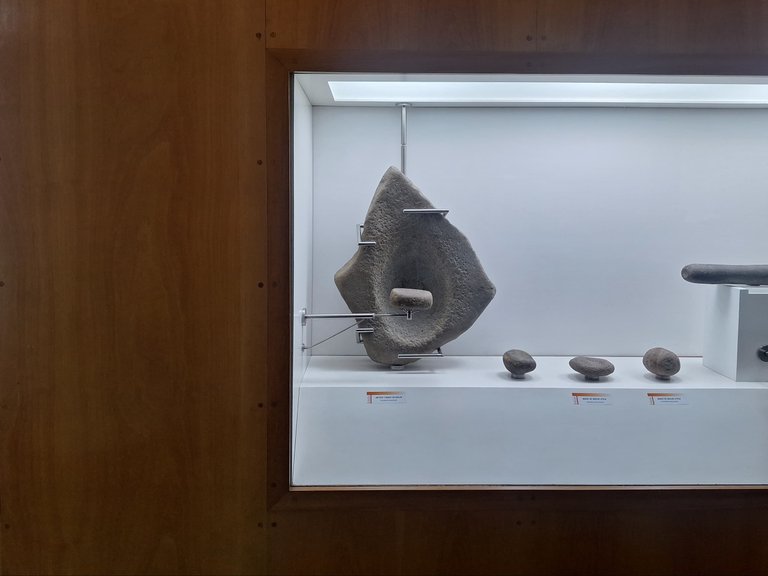 | 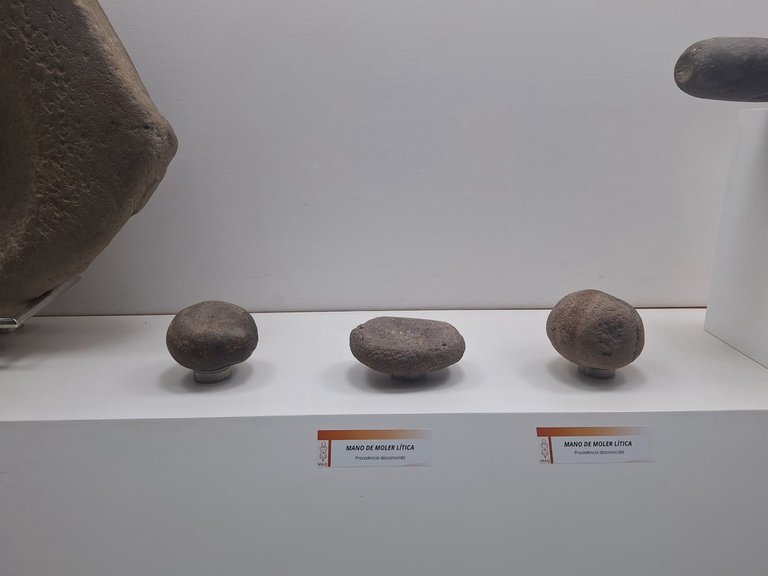 | 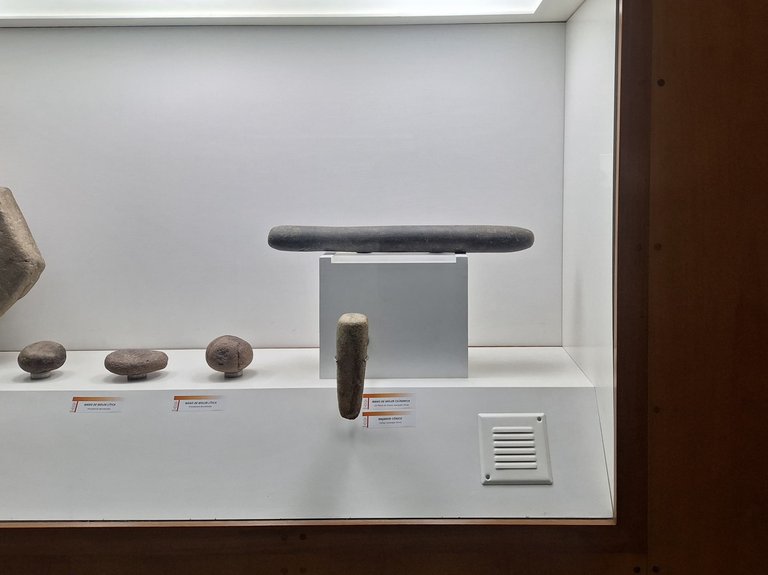 |
Another item on display was lithic sharpeners, found in the Torres municipality of Lara State. I assume these were used by indigenous people to sharpen stone knives or similar tools.
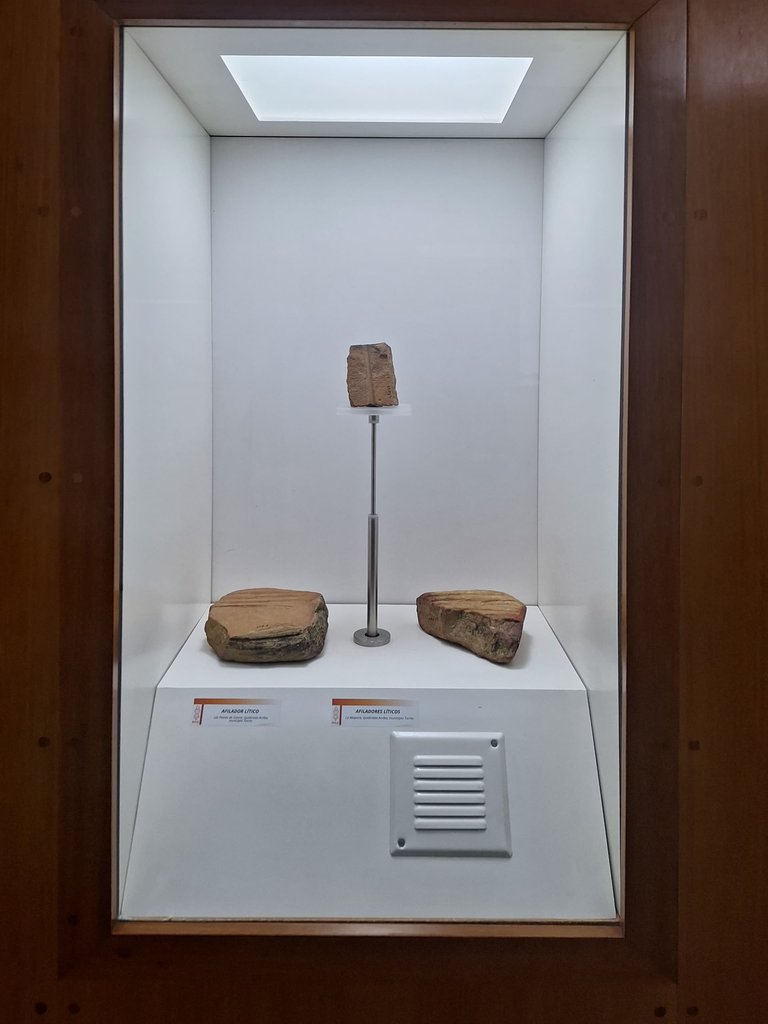
At the far end of Hall 5 were carbonized corn cob fragments and a clay impression of a corn cob. The way these were presented was extraordinary—especially the corn impression in clay. It was truly beautiful!
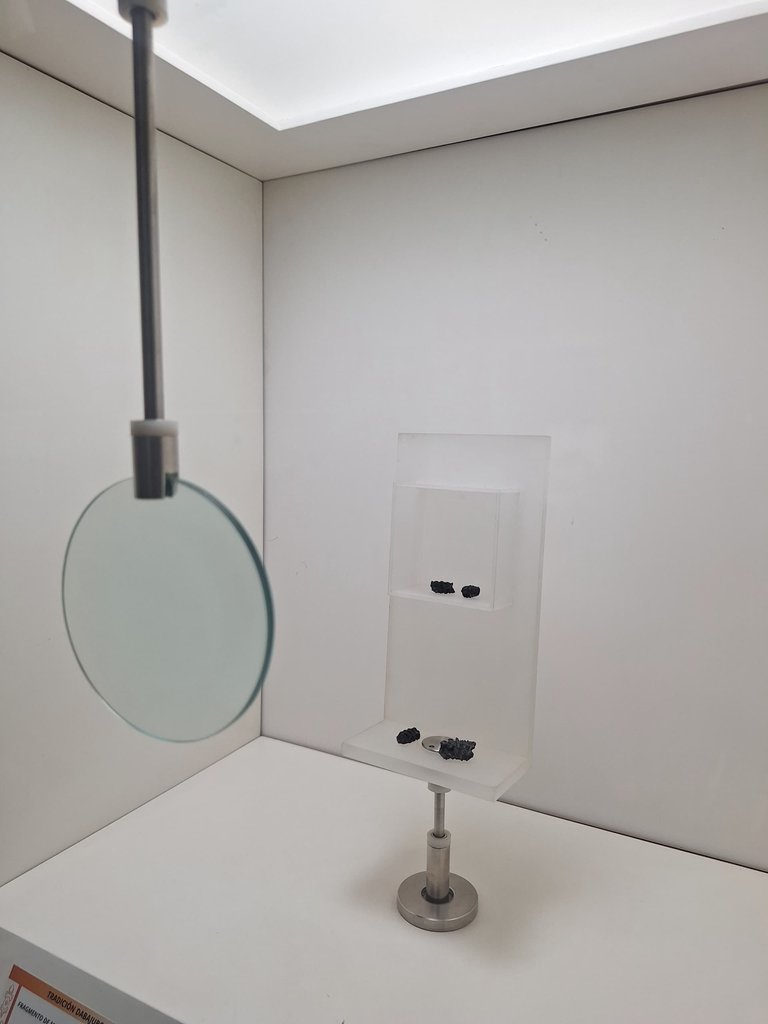 | 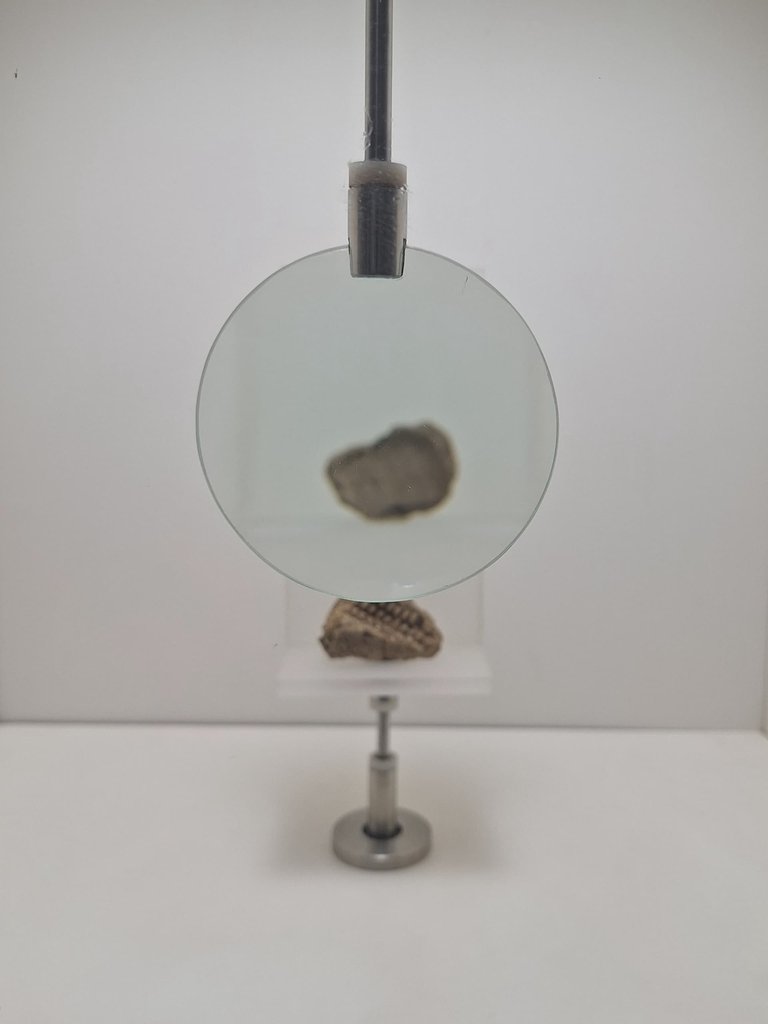 | 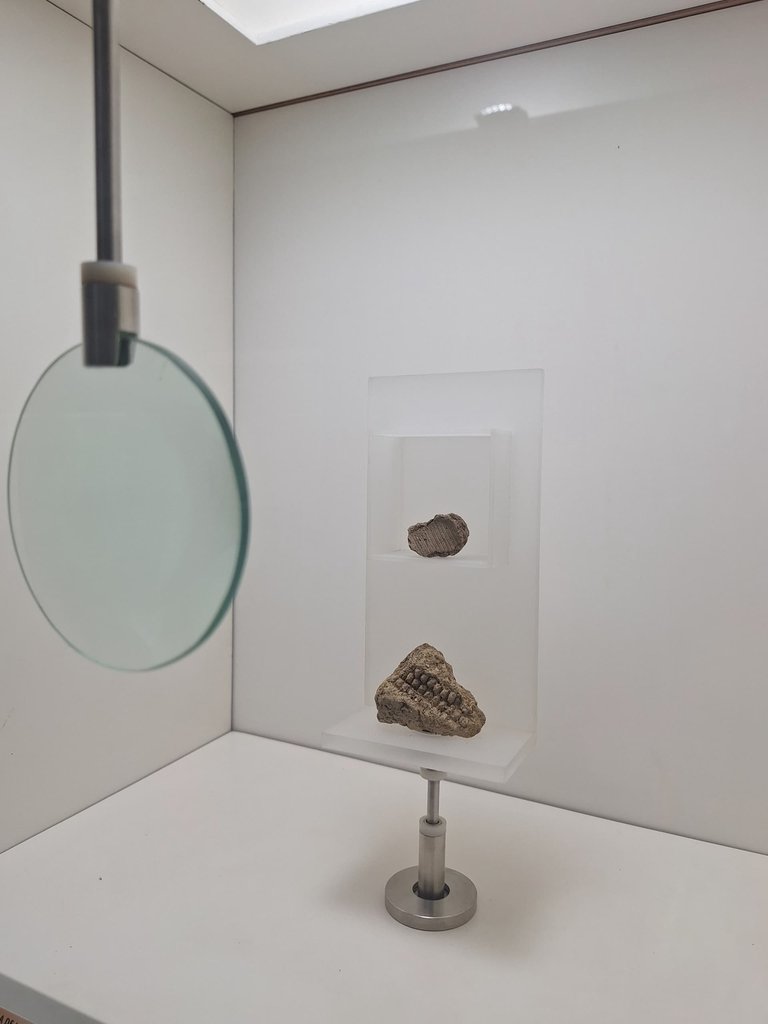 |
Before heading to Hall 6, I took some time to walk through the museum corridor. The white walls were lined with framed photos, and the brown floors created a pristine visual contrast.
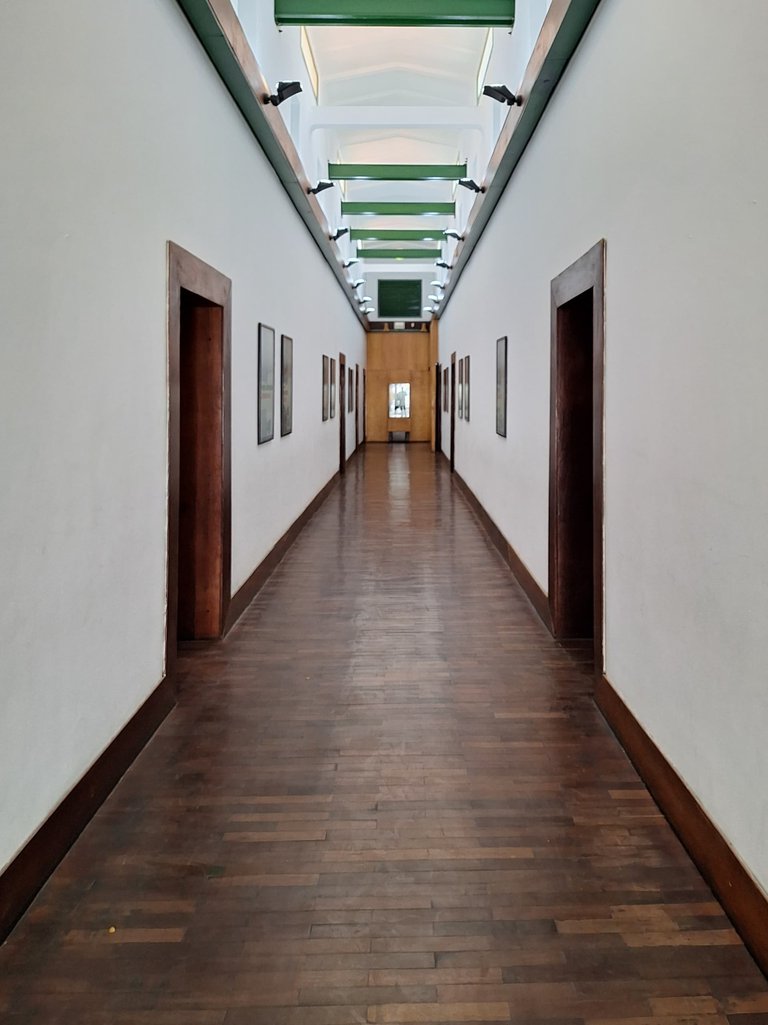
I took some photos of the portraits hanging in the hallway. Each one featured the biography of a prominent Venezuelan archaeologist. The only name I recognized was Mario Sanoja.
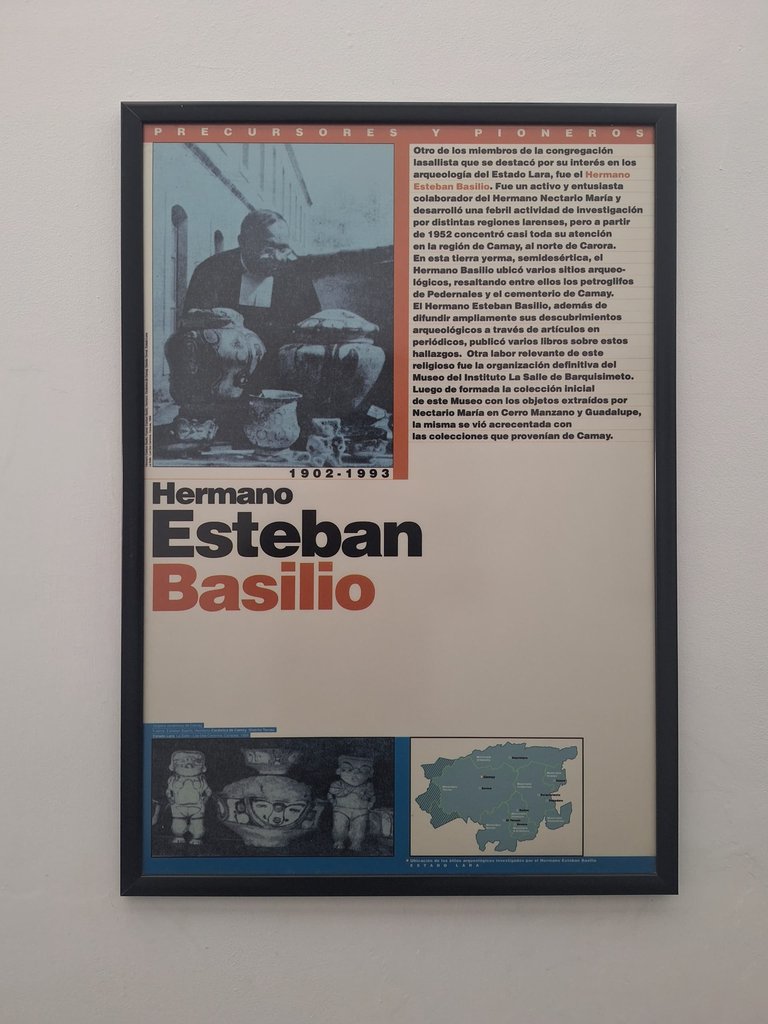 | 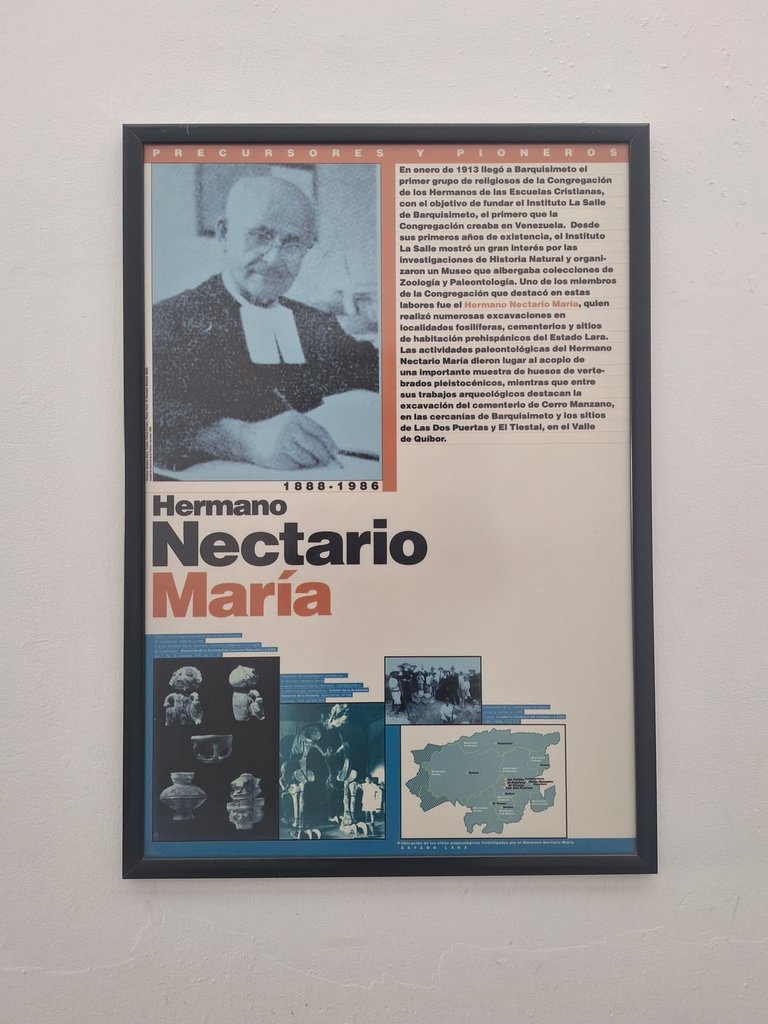 | 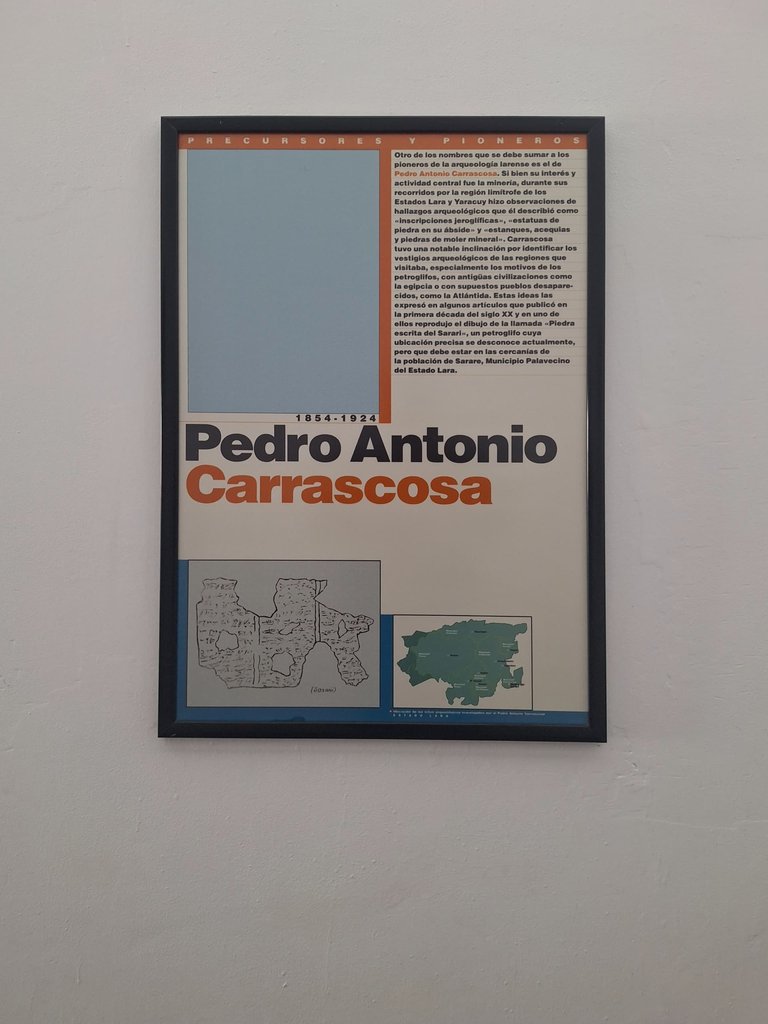 |
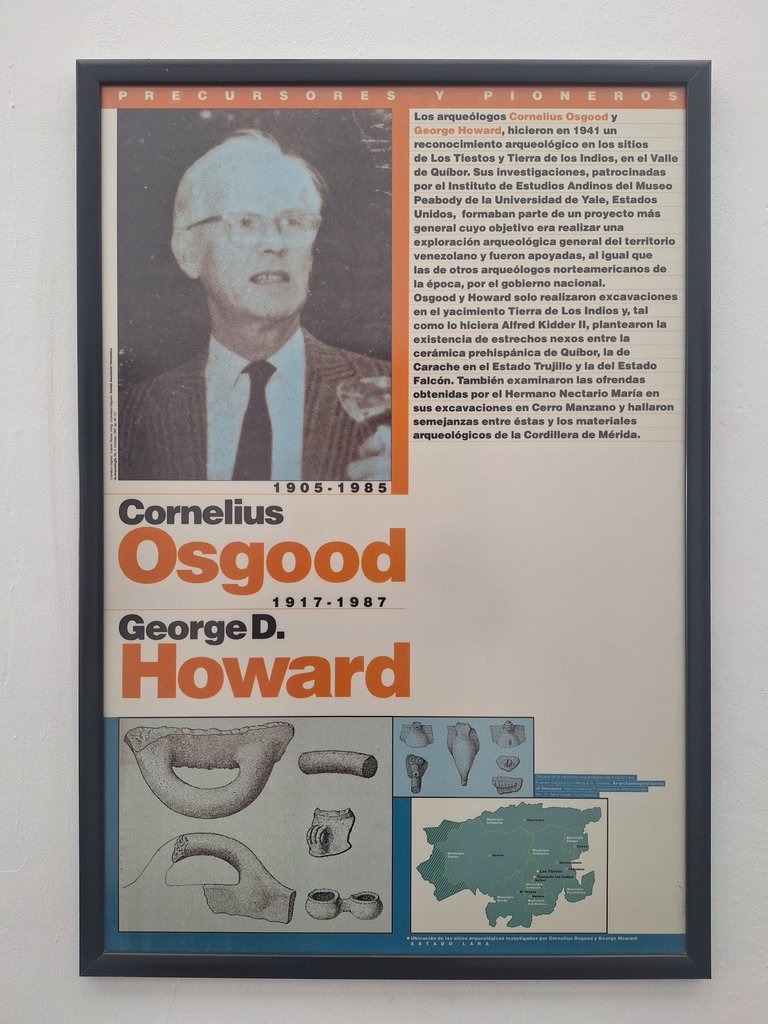 | 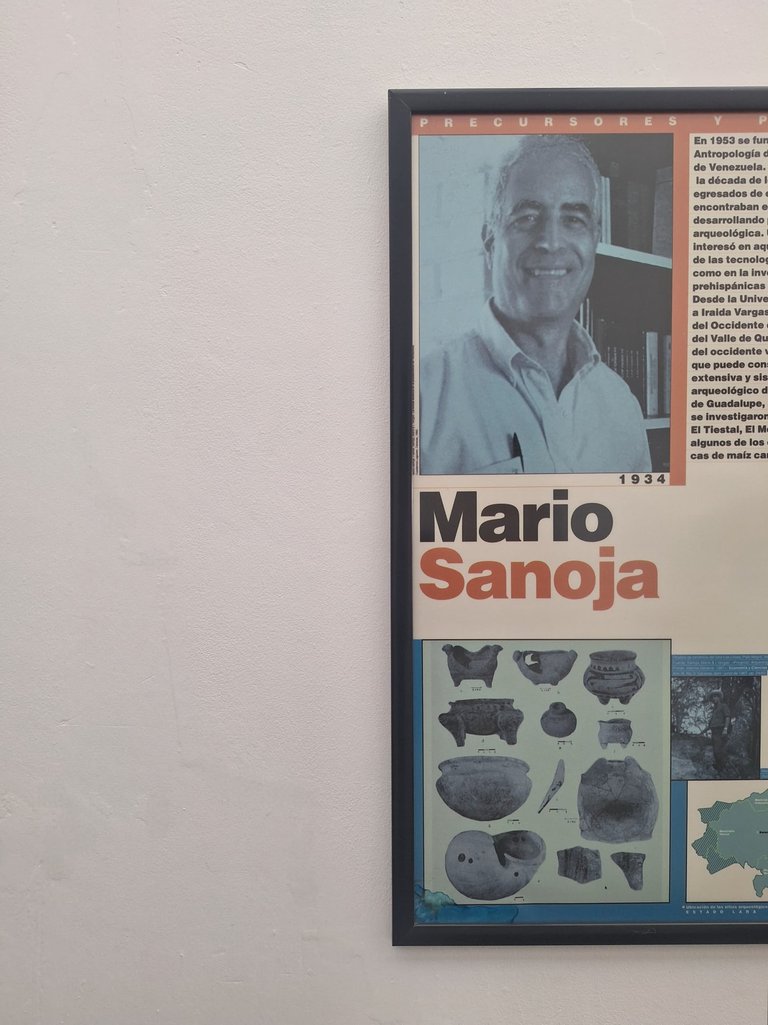 | 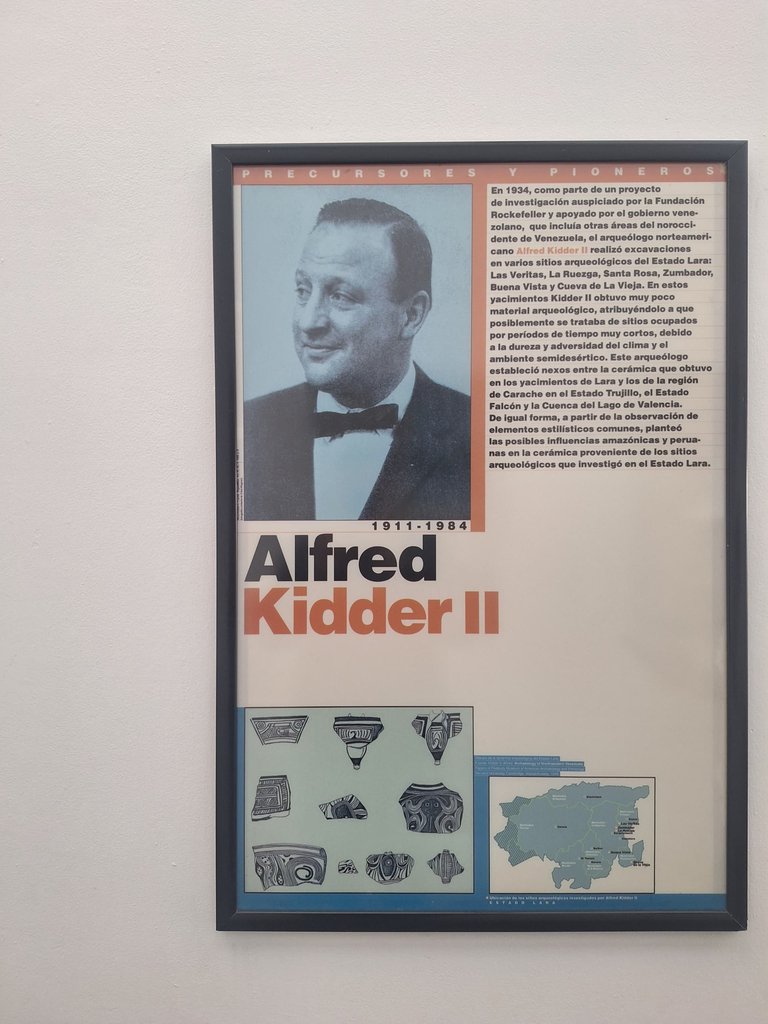 |
As you may know, I’m an urbanist, and I pay close attention to building details. I really appreciated the ceiling design in the museum. The structural elements were very well integrated, and the interior design was impeccable—color harmony was clearly maintained.
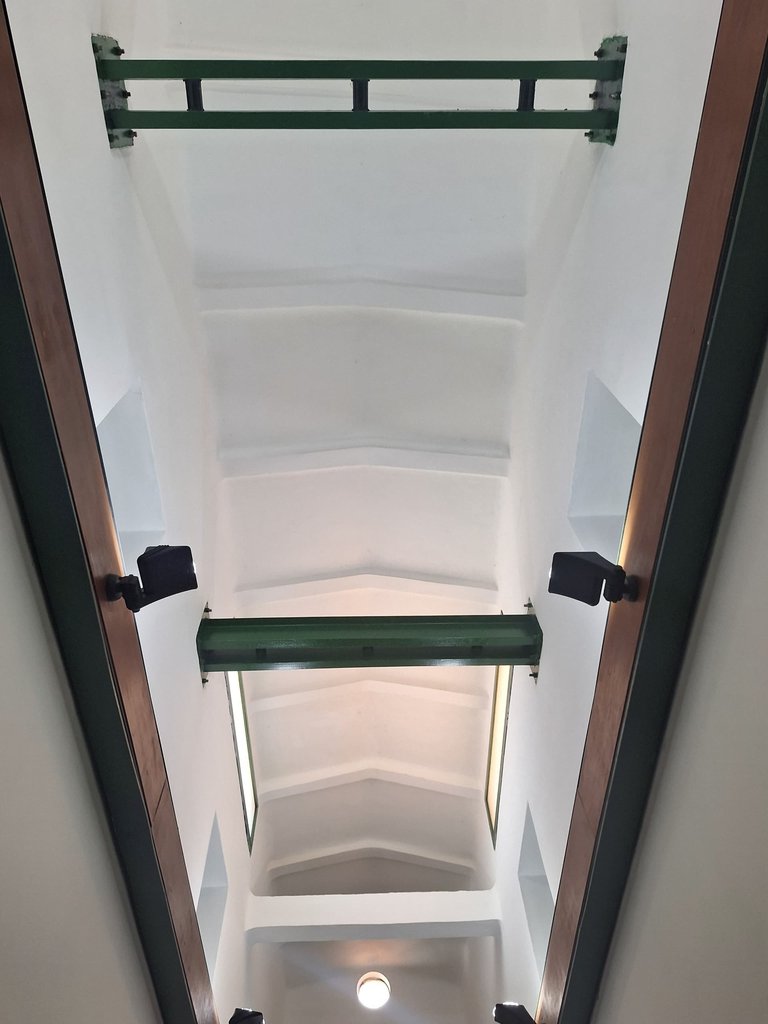
After the corridor, I entered the final hall—Hall 6. It contained knives, knife fragments, scrapers, percussion tools, and other objects, all neatly displayed.
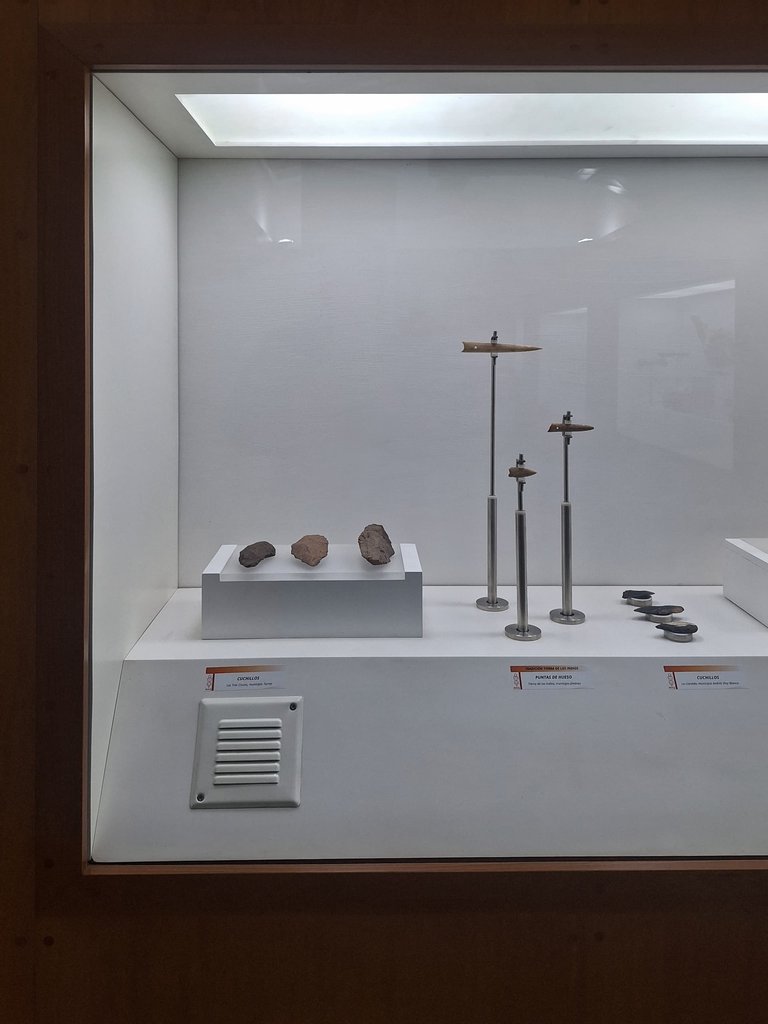 | 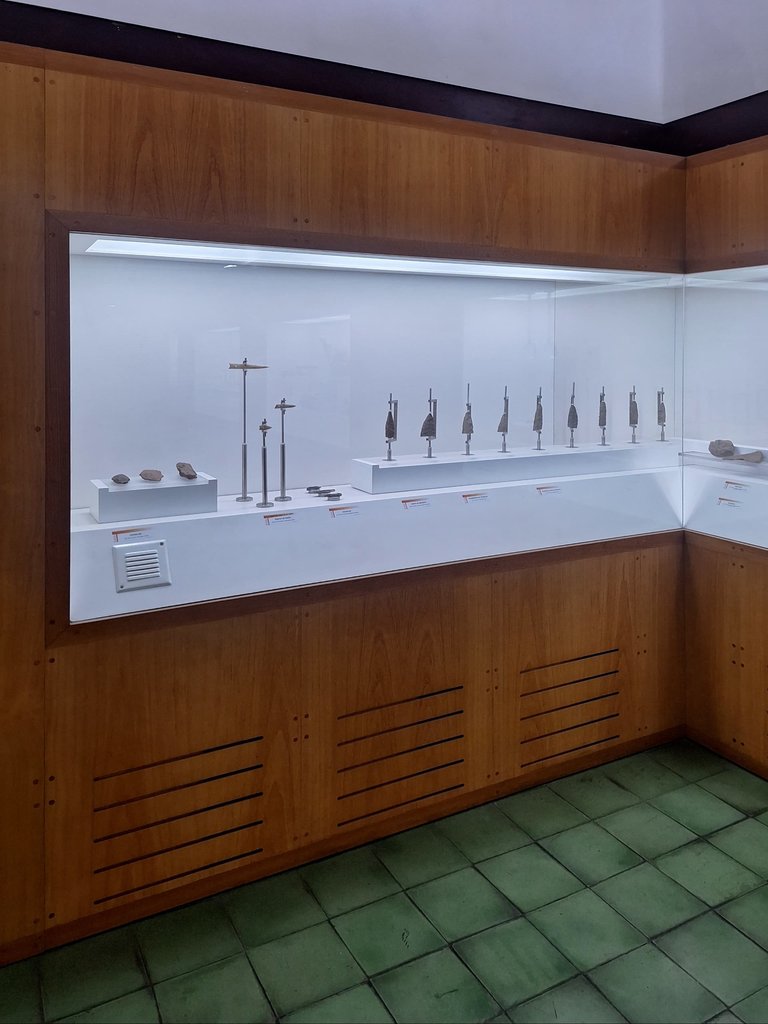 | 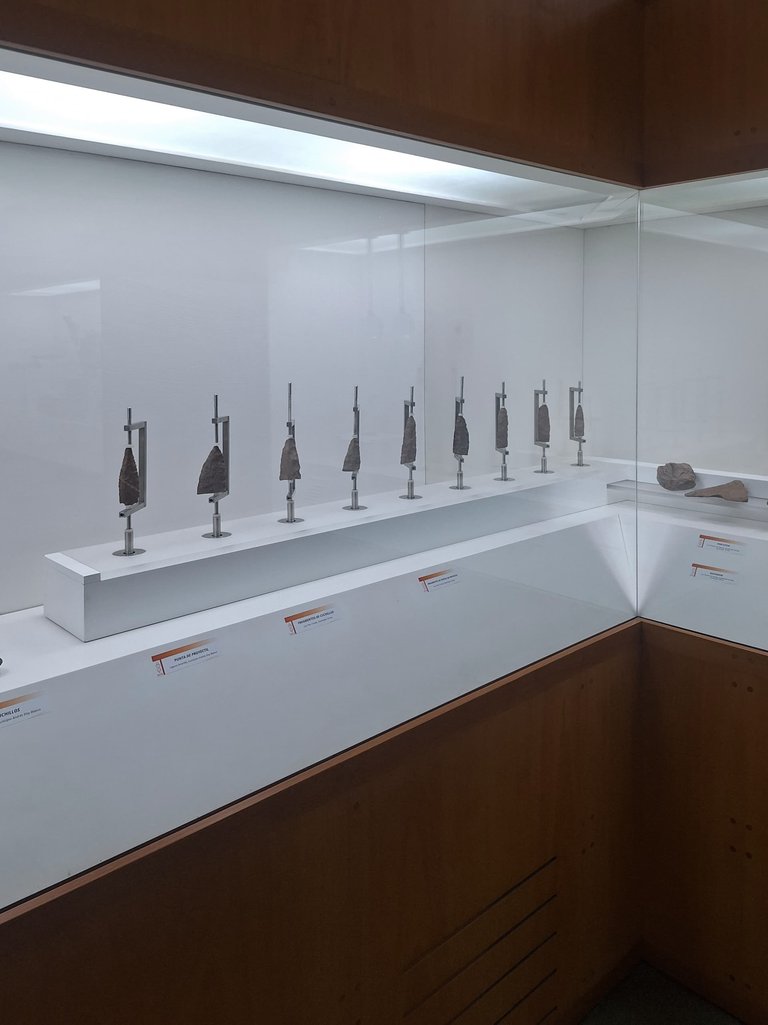 |
One of my favorite pieces in Hall 6 was a projectile point, as well as human vertebrae, a femur fragment, and a jawbone. These bones were kept in a glass case but were still quite fascinating.
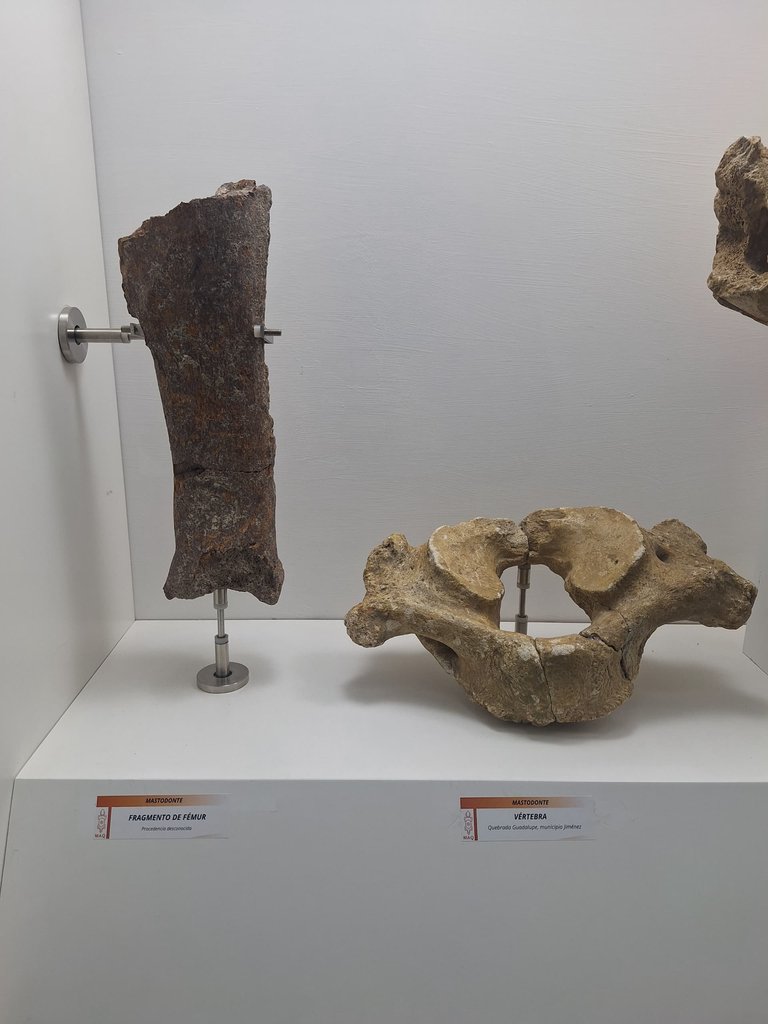 | 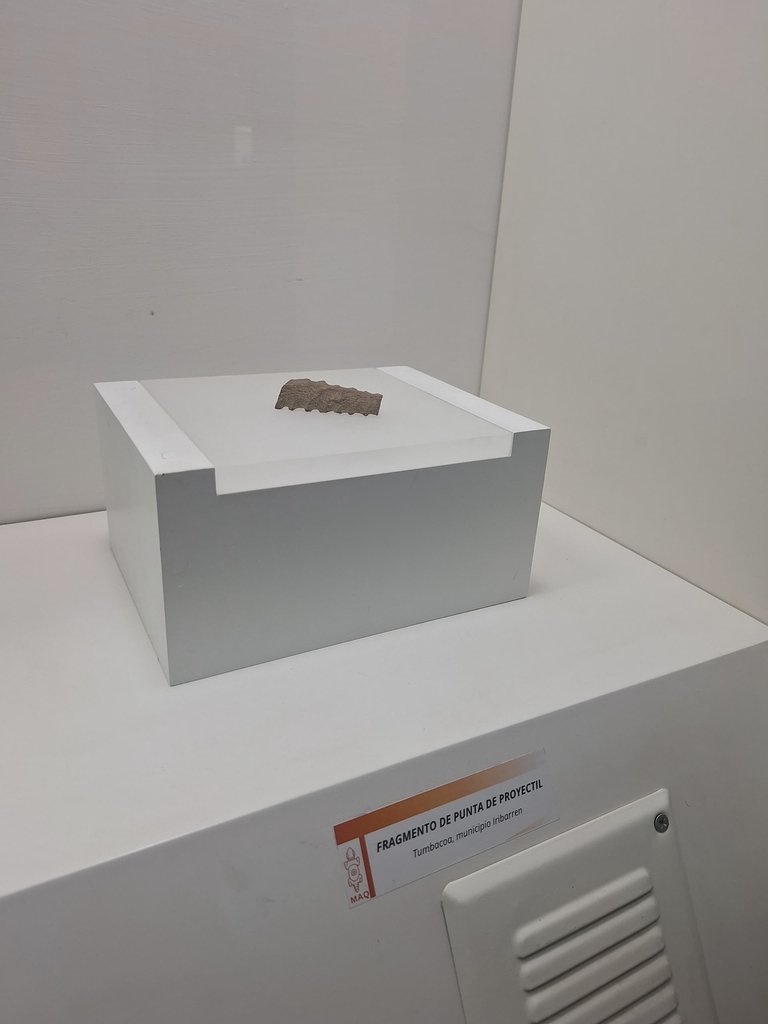 |  |
 | 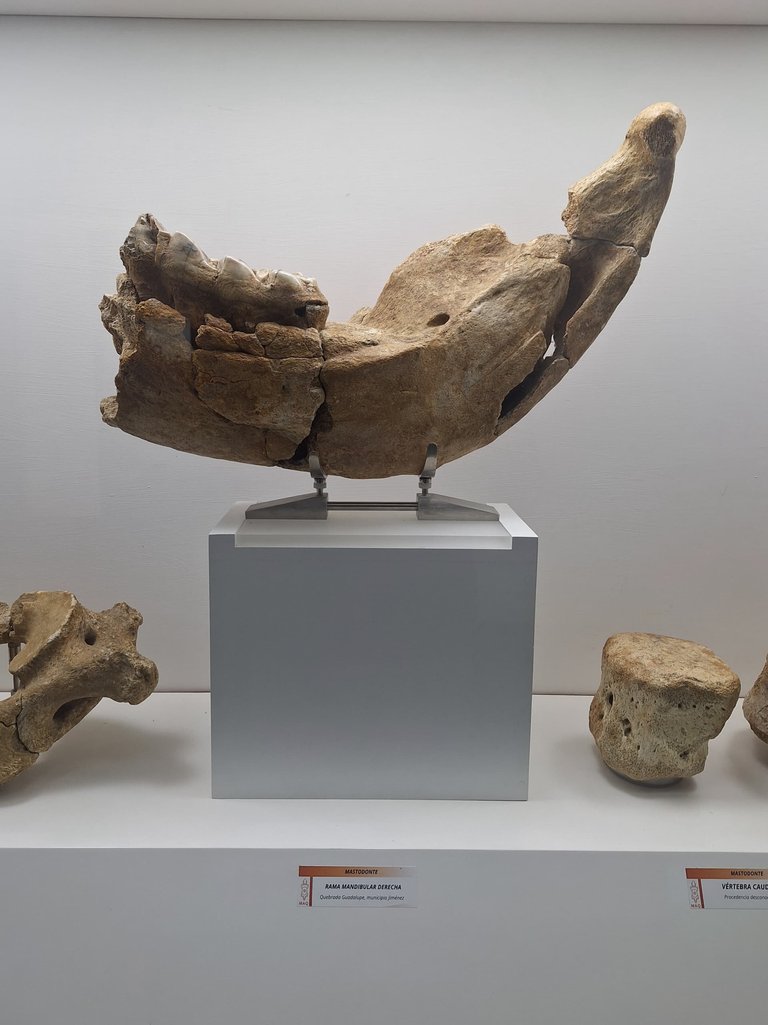 |  |
Among these, the jawbone stood out the most. Its massive size made it visually striking, whether viewed from a distance or up close.
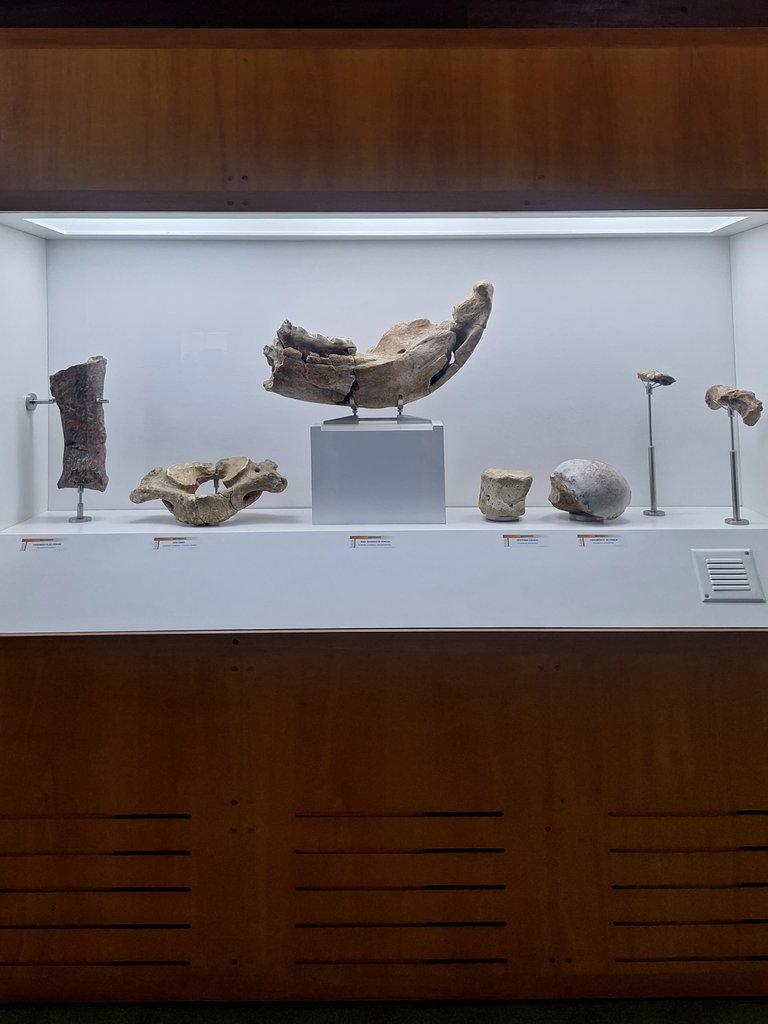
Another piece I observed was a woven necklace, along with a mysterious spear-thrower handle and a perforator. They were in separate display cases, but I examined them all before leaving Hall 6.
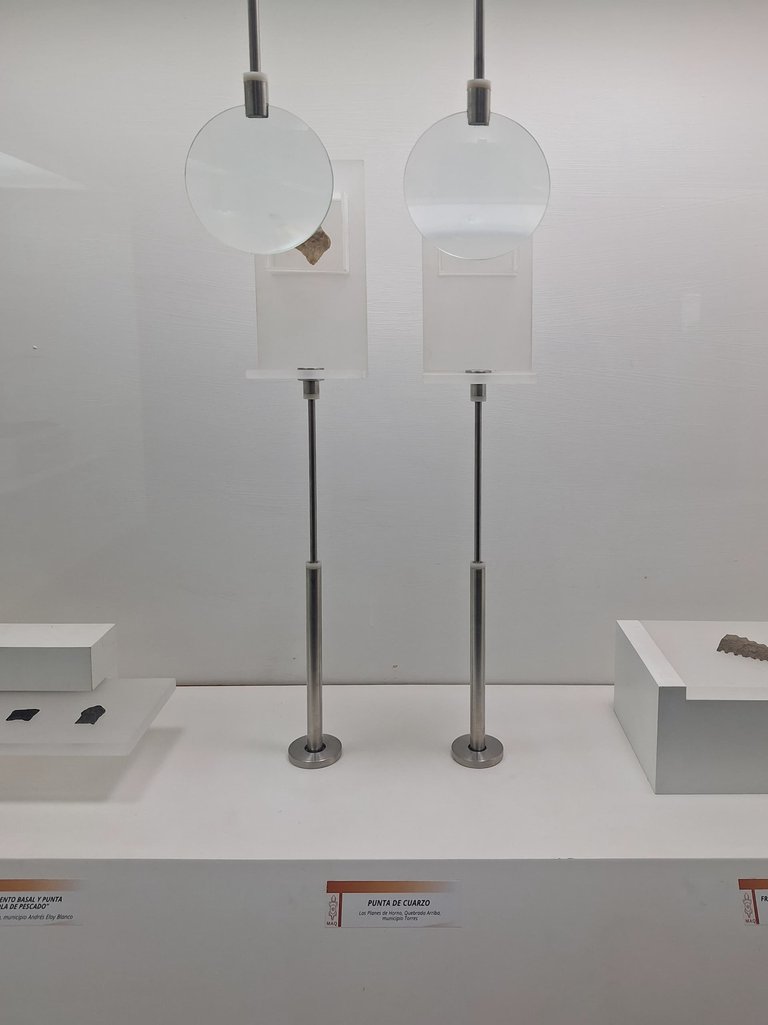 | 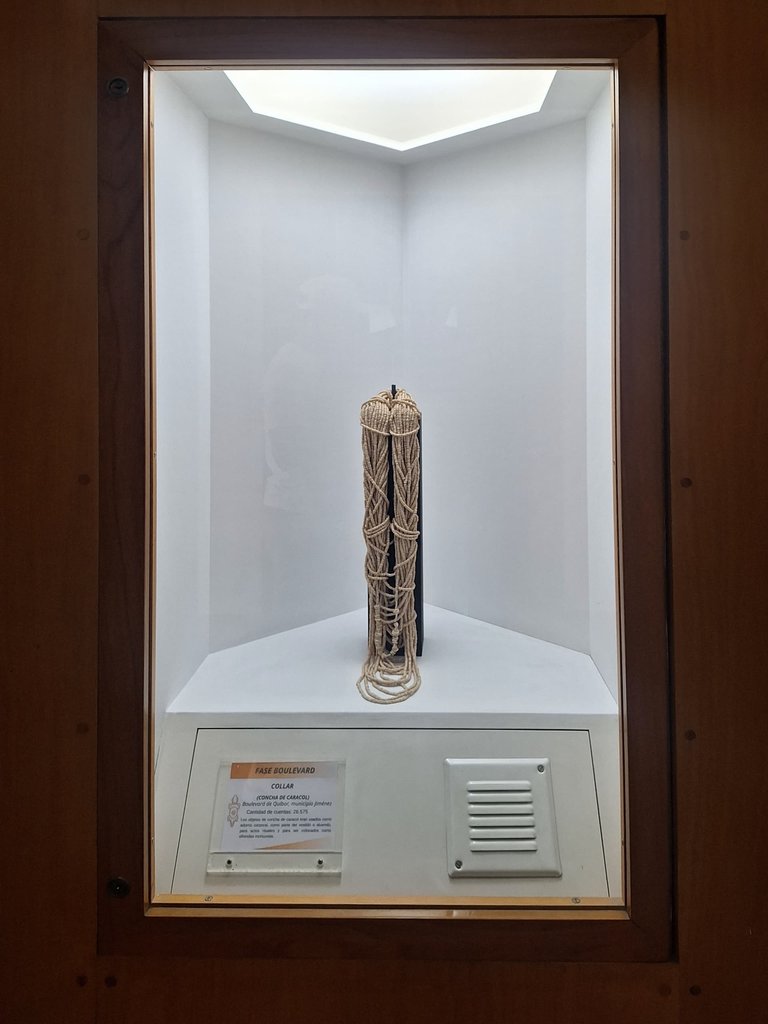 | 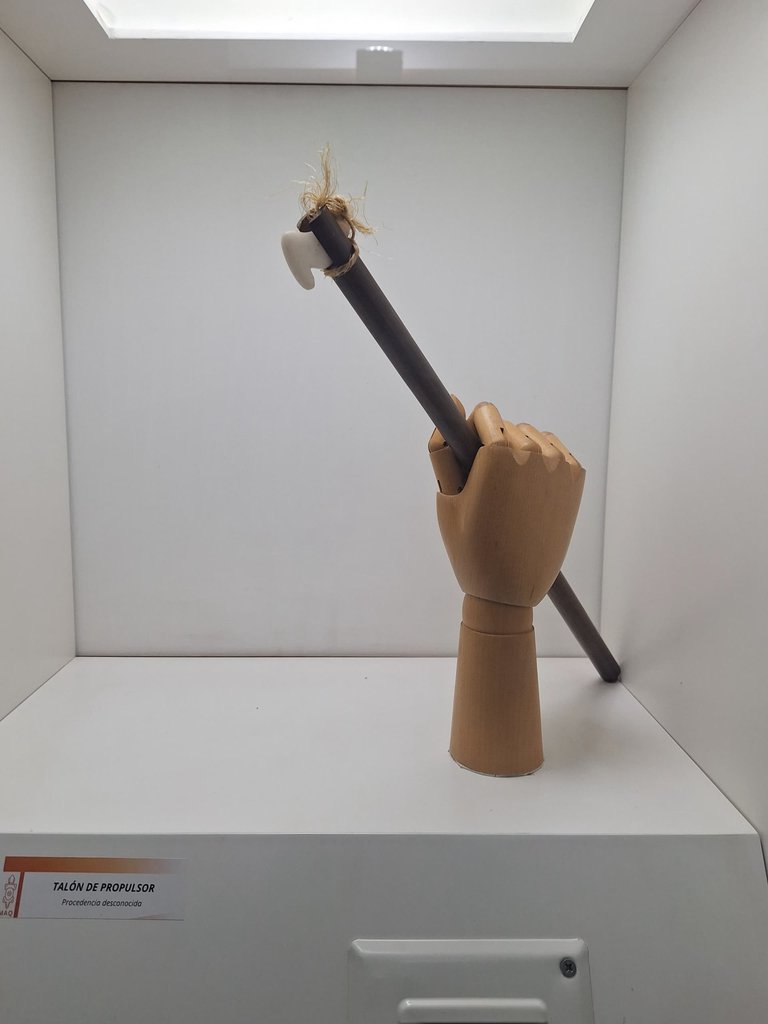 |
At the back of the main museum building, there’s a door leading to other areas. Near the parking lot, I found a damaged scale model. Behind the building were the research areas, and in front of them was an art exhibit space.
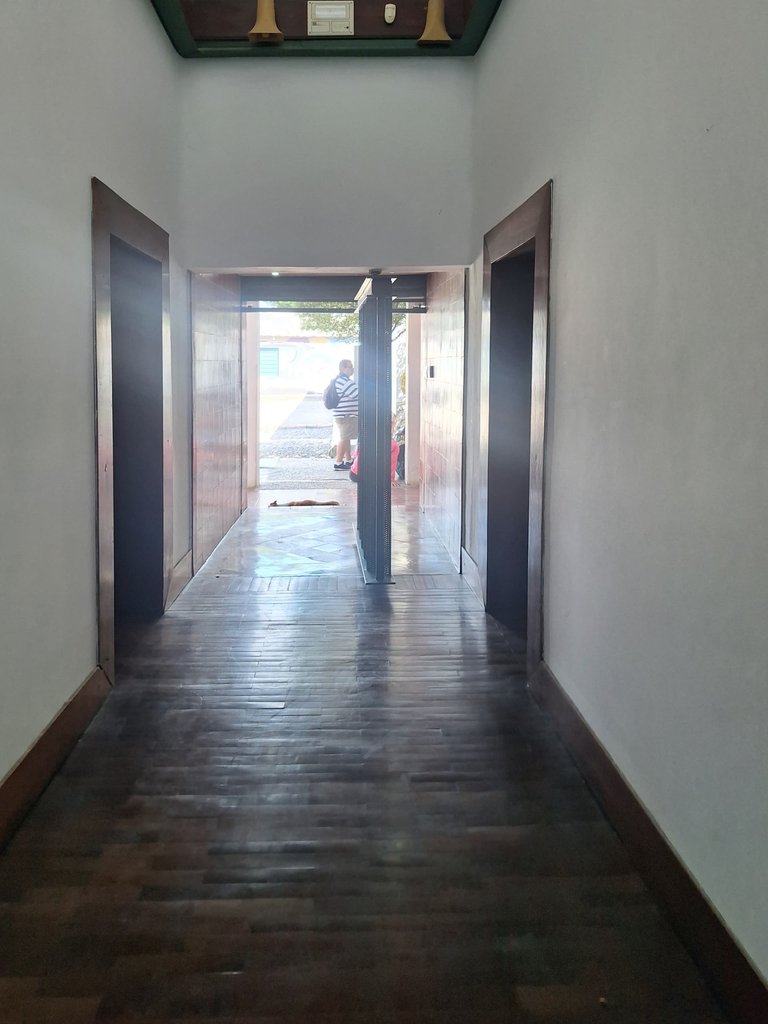 | 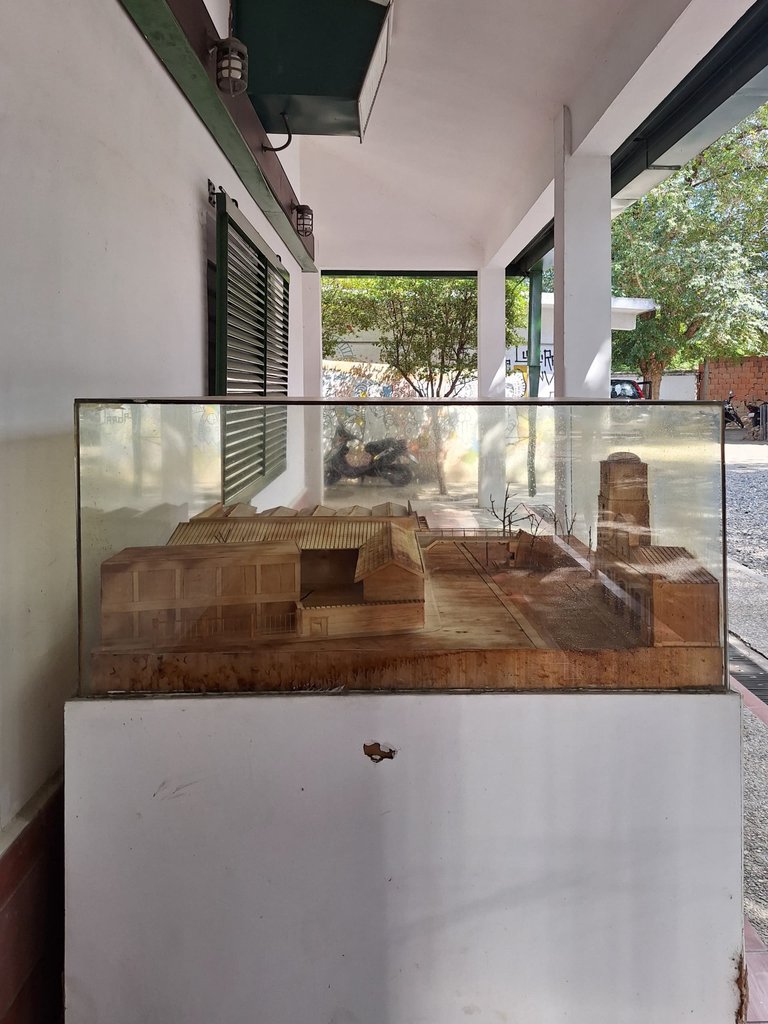 | 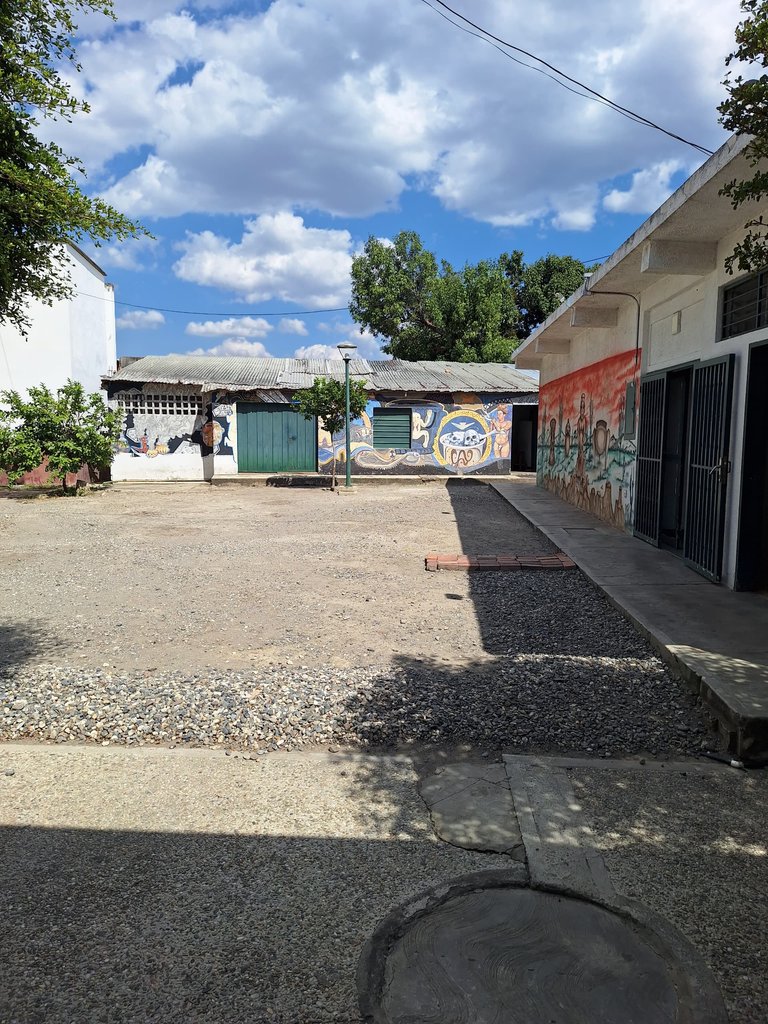 |
 | 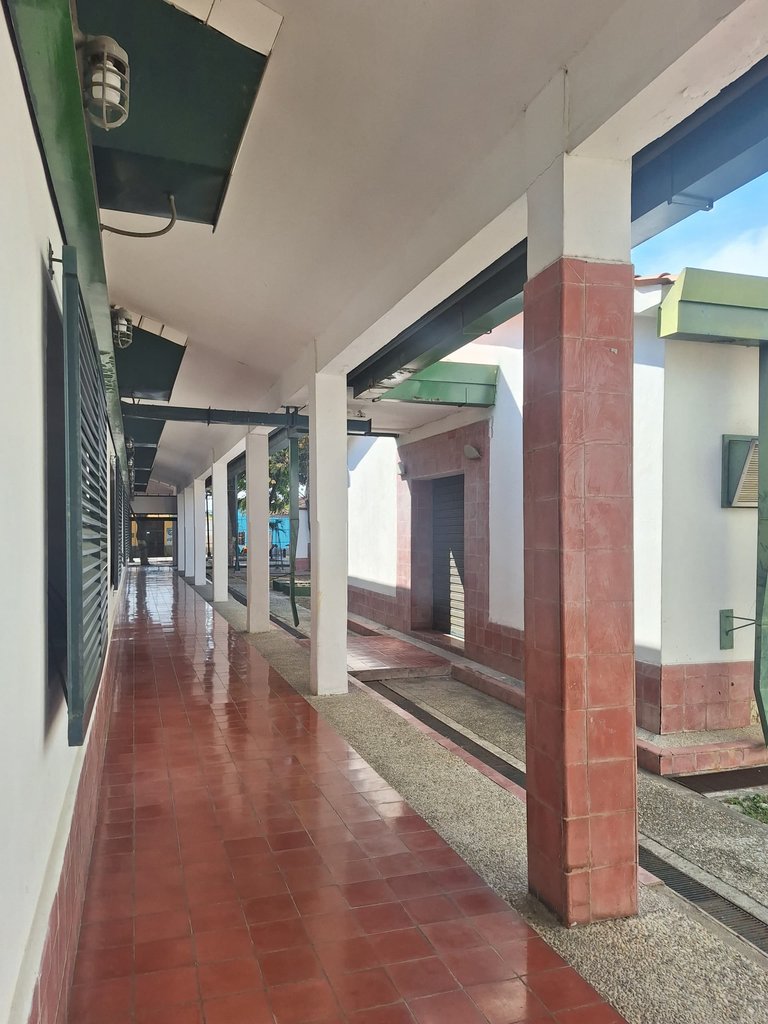 | 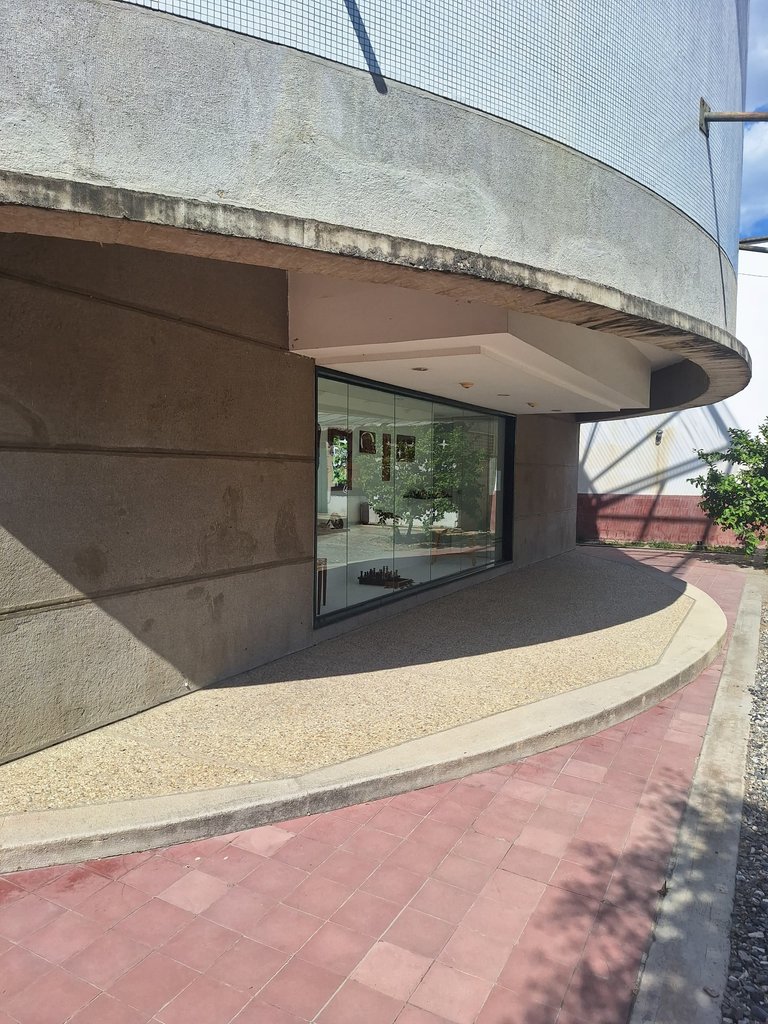 |
I approached the exhibition and took some photos of the artwork on display. The exhibition was titled: “Verary. Nobility Made Craft.” The pieces were created by four artists from Lara State—their names are listed in a photo I took.
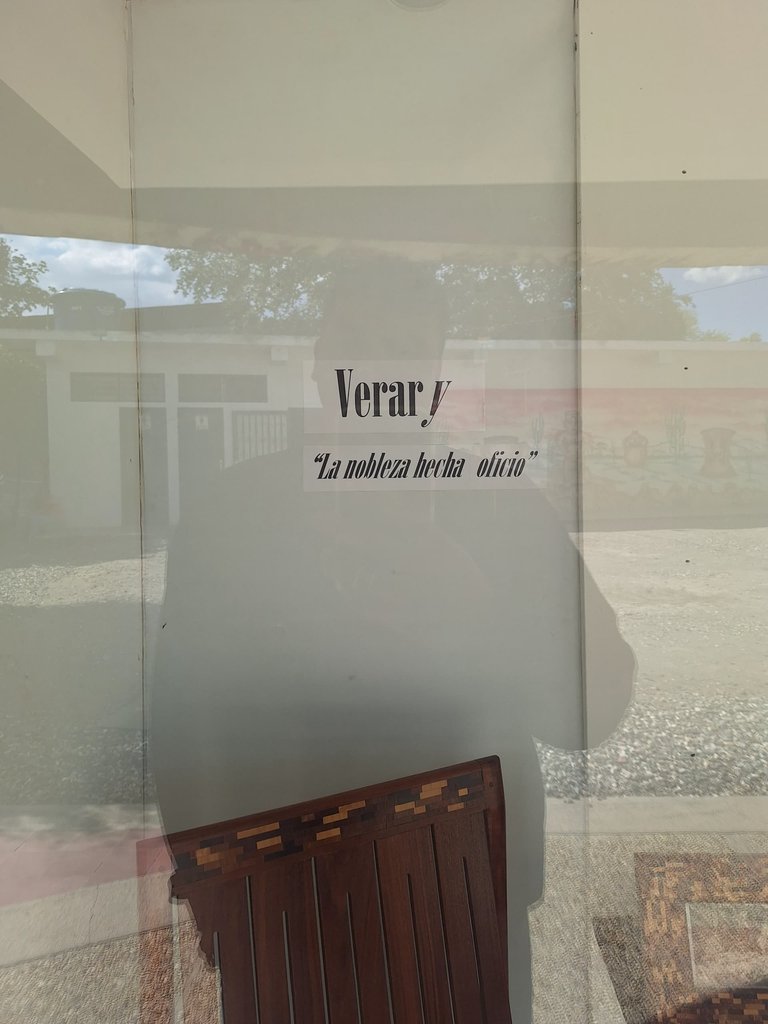 | 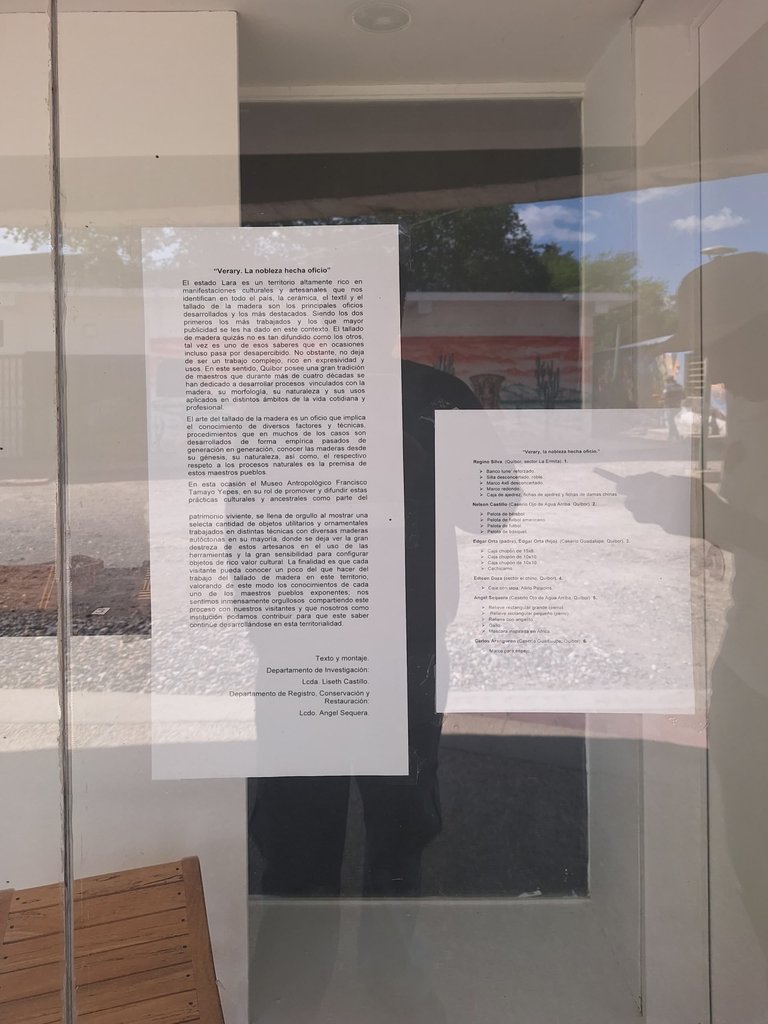 | 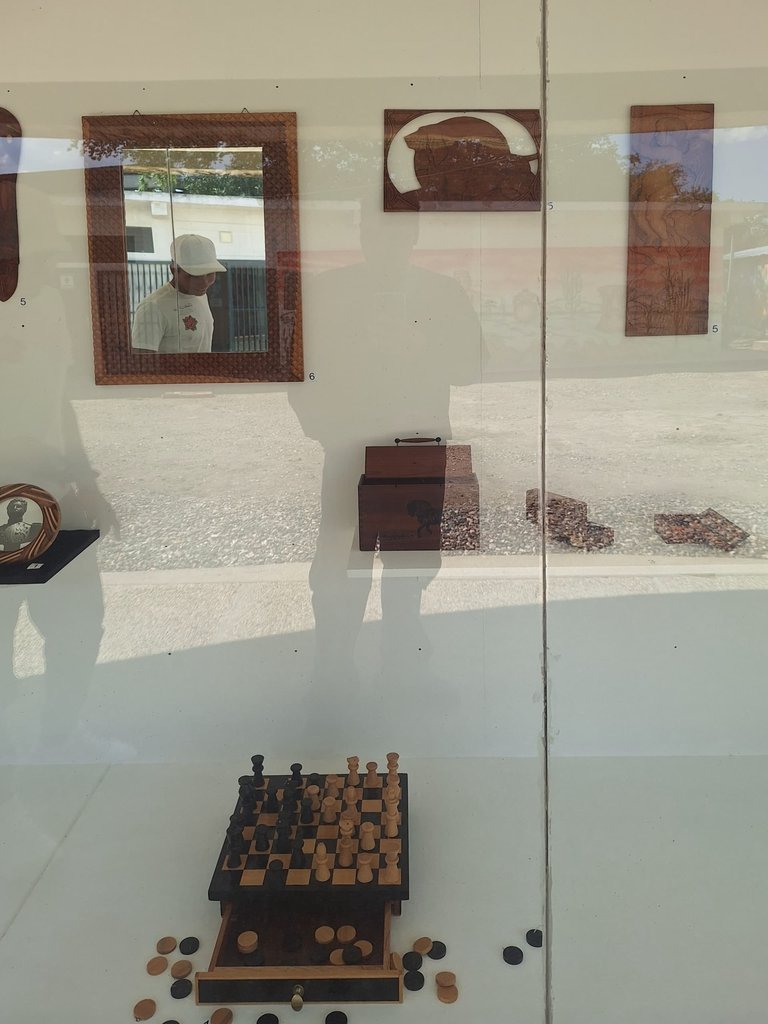 |
 | 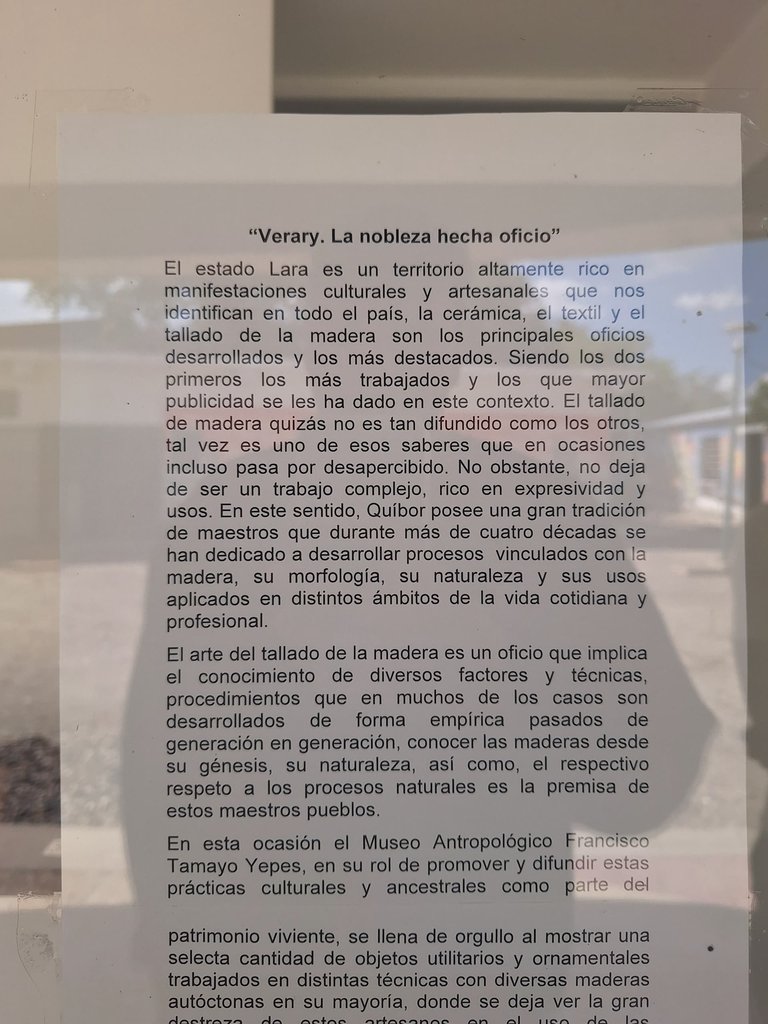 | 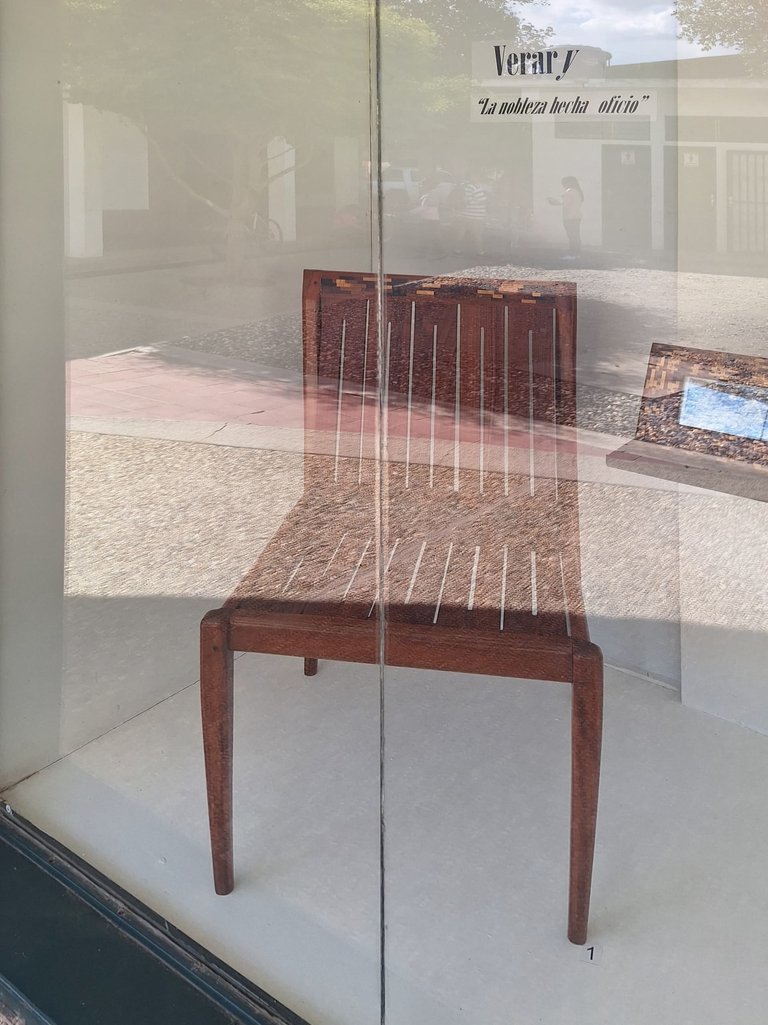 |
Unfortunately, the sunlight created reflections, so the pictures didn’t come out as I’d hoped. The piece I liked the most was titled: “La Silla” (The Chair).
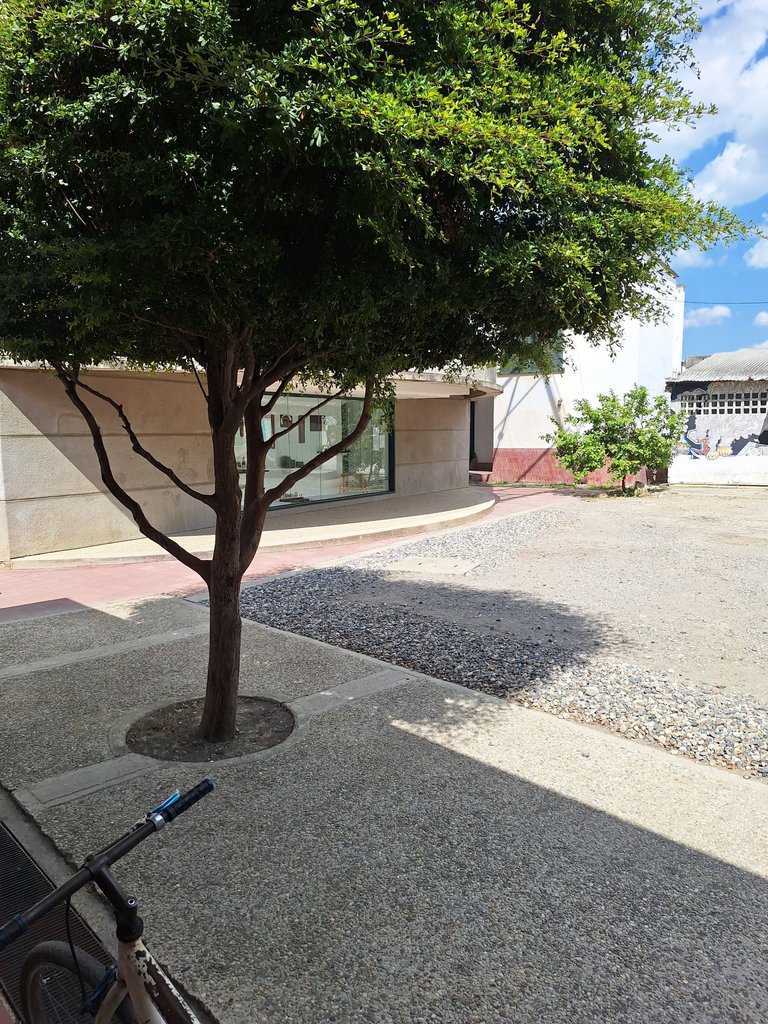
The the Francisco Tamayo Yépez Anthropological Museum is a unique place that preserves the cultural value and part of the history of Lara State, which is part of Venezuela. The artworks, pieces, crafts, and objects here are invaluable treasures that form a vital part of the country’s history. Seeing and exploring them reminded me that beauty can also be found in the past. Enjoy it—I love you all.
Original content by @neruel. All rights reserved © 2025. Images: Samsung Galaxy A54. Translation and grammatical corrections: ChatGPT - DeepL - LanguageTool.
SPANISH VERSION (click here!)
Cada viaje es una historia. Una historia puede estar estructurada por partes o capítulos, pero lo más importante es que el autor vierta su alma en cada palabra. Quiero iniciar esta aventura con esa creencia que me hace estar aquí. Para comprender esta historia o segunda parte, te invito a visualizar la primera en el siguiente enlace: Tesoros Olvidados: Explorando el Misterioso Museo de Quíbor - Parte 1. Escribí escuchando la canción "I'll Never Love Again" de Lady Gaga.
Ir al Museo Antropológico Francisco Tamayo Yépez en Quíbor fue para mí una de las mejores experiencias. Principalmente, por cada vivencia. En el primer post escribí mi exploración desde el vestíbulo y las salas 1, 2 y 3. En este post quiero mostrarle historia, raíces, esencia y un pequeño pedazo de Venezuela. Sí, historia y civilización.
Luego de visualizar las tumbas y huesos humanos fosilizados en la sala 3, me dirigí a la sala número 4. Esta sala te recibe con una figura andromorfa masculina. La pieza se encontró en el Rincón de Guardia, que es una depresión de Quíbor, ubicada en el estado Lara, Venezuela.
Según lo que documenté en el museo, la pieza tiene entre 1500 y 1800 años de antigüedad (bastante tiempo). Además, fue encontrada en un cementerio; al parecer estaba dedicada a temas de respeto o algo similar.
Esta es una de las obras arqueológicas con mejor detalle en el museo; se pueden apreciar muy bien los acabados, delineados y coloración. Me gustó que estuviera exhibida para observarla en todas las dimensiones.
La sala número 4 es inmensa y conecta con la número 5. Las piezas exhibidas en esta sala son hermosas. Detrás de la pieza andromorfa, de manera simulada, hay vasijas de urnas funerarias, una vasija de tetrápode, una vasija globular, un cuenco pentápode con caracol y otros.
De todas las piezas que mencioné anteriormente, las más impresionantes fueron la vasija de tetrápodo, la vasija globular y el cuenco pentápode con caracol. Cada uno estaba exhibido con detalles. En el caso del cuenco, no estaba en perfecto estado, pero fue una de las obras que me impresionó por su belleza.
En otra vitrina había varias vasijas trípodes. Cada vasija tenía un diseño diferente, pero atractivo. En la ciudad de Quíbor hay un monumento de esta categoría que visité. Compartí mi experiencia anteriormente.
Quiero que veas la siguiente fotografía y detalles, la armonía en la que cada una de las piezas o vasijas trípodes estaba colocada. Por alguna razón, emanan poder.
La sala más grande del museo era la número 4. En otra vitrina había vasijas globulares con ventanas, pedestales y siluetas de caras humanas. La manera en que estaban diseñadas intrigaba de un modo u otro.
La variedad de obras era impresionante e impecable. Lo único que no me gustaba eran las descripciones en papel. Provocaban que se perdiera la elegancia artística. En las siguientes fotos, hay más trípodes de diferentes formas, vasijas redondas, pedestales, cuencos y siluetas de caras humanas.
Llegué a una de las partes más impresionantes de la sala número 4. La vitrina estaba llena de figuras antropomorfas. Una más impresionante que otra. Algunas eran en forma de vasijas, botellas o figuras que intentaban representar a los seres humanos.
La pieza que más me gustó fue esta vasija efigie zoomorfa de felino. Esta pieza de color blanco llama mucho la atención, no solo por la manera en que está exhibida, sino por su propia belleza. La forma que posee causó que analizara qué tipo de representación animal tenía.
No puedo negar que me gustó demasiado esta pieza. Es una de las más atractivas de la sala número 4 del museo. Es intrigante que sea una vasija y no una pieza esculpida.
Luego de percibir cada una de las obras en la sala número 4, pasé a la 5, donde había exhibiciones de objetos metálicos y fosilizados. La sala era amplia y tenía una maqueta junto a una cartelera informativa al final.
Esta fotografía captura la esencia y elegancia de cada una de las obras exhibidas en la sala. La fotografía no es perfecta, pero muestra lo impresionante que era el lugar. Hay morteros y una coa (un palo de sembrar). Este palo era inmenso.
La sala número 5 tenía un metate, manos de moler redondas y cilíndricas. Es impresionante cómo los indígenas usaban esto para poder hacer comida. Sus tradiciones y esencia cultural son parte de lo que este museo contiene.
Dejo una muestra en diferentes perspectivas de las mismas piezas para que puedan valorarlas de una mejor manera. Creo que la esencia de todo está en disfrutar su belleza.
Otro elemento exhibido eran afiladores líticos encontrados en el municipio Torres del Estado Lara. Deduzco que los indígenas con esto afilaban cuchillos de piedra o algo así.
En la última parte de la sala 5 había fragmentos de mazorca de maíz carbonizada y otra de impresión de mazorca de maíz sobre arcilla. La manera en que estaba presentada era extraordinaria. Particularmente, la presentación de la impresión de mazorca de maíz sobre arcilla. ¡Era preciosa!
Antes de ir a la sala número 6, decidí recorrer el pasillo del museo. Las paredes eran de color blanco, estaban llenas de cuadros y junto al piso de color marrón creaban una escena impecable.
Decidí tomar algunas fotografías de los cuadros colgados en el museo. Cada uno de los cuadros tenía la biografía de un arqueólogo destacado en Venezuela. El único de quien había oído hablar era de Mario Sanoja.
Como sabrán, soy urbanista y detallo los elementos de las edificaciones. En el caso del museo, me gustó el diseño del techo. Los elementos estructurales estaban muy bien integrados. Además, el interiorismo era impecable. Se mantenía la armonía de colores.
Luego de recorrer el pasillo, pasé a la última sala del museo, la número 6, donde había cuchillos, fragmentos de cuchillos, raspadores, percutores, entre otras piezas. Cada uno de los objetos estaba bien exhibido.
Una de las piezas que más me gustó de la sala 6 fue una punta de proyectil, las vértebras humanas, un fragmento de fémur y una rama de mandíbula. Los huesos humanos estaban detrás de una vitrina, pero se veían intrigantes.
En esta vitrina lo que llamaba más la atención era la rama de mandíbula. El tamaño era inmenso y notable. Lo que hacía que fuese interesante observar la escena desde lejos o cerca.
Una de las últimas piezas que observé aquí fue un collar tejido, junto a un talón de propulsor de origen desconocido y una perforadora. Todos estaban en diferentes vidrieras, pero los detallé antes de salir de la sala número 6.
Al final del edificio principal del museo, hay una puerta que te lleva a las otras áreas. Por ejemplo, cerca del estacionamiento encontré una maqueta deteriorada. En la parte trasera, también estaban las áreas de investigación y frente a ellas había un espacio de exposición de arte.
Me acerqué al lugar de la exposición y tomé algunas fotografías de las obras exhibidas. La exposición tenía por nombre: “Verary. La nobleza hecha oficio”. Las obras eran de cuatro artistas larenses. Los nombres están en la hoja que fotografié. Las fotos no salieron como esperaba debido al reflejo causado por la luz solar. La obra que más me gustó fue: “La silla”.
El Museo Antropológico Francisco Tamayo Yépez es un lugar único que recoge el valor cultural y parte de la historia del estado Lara, estado que forma parte de Venezuela. Las obras, piezas, artesanías y objetos que están aquí son tesoros invaluables que forman parte de la historia de este país. Verlo, explorarlo me recordó que la belleza también se encuentra en el pasado. Disfrútalo, los amo.
Contenido original de @neruel. Todos los derechos reservados © 2025. Imágenes: Samsung Galaxy A54. Traducción al inglés y corrección gramatical: ChatGPT - DeepL - LanguageTool.
Posted Using INLEO
You can check out this post and your own profile on the map. Be part of the Worldmappin Community and join our Discord Channel to get in touch with other travelers, ask questions or just be updated on our latest features.
Let's keep telling stories and having fun. There are many more things to come. :P
Hey @neruel you are welcome.
Thanks for using @worldmappin 😘
You guys are a sweetheart. 😍😍
👍😘
A beautiful exhibition in this museum of Quíbor. Thank you for sharing with us such beautiful pictures of the experience.
Greetings dear friend.
A unique experience, there are many incredible pieces and works.
Hiya, @ybanezkim26 here, just swinging by to let you know that this post made it into our Honorable Mentions in Travel Digest #2549.
Your post has been manually curated by the @worldmappin team. If you like what we're doing, please drop by to check out all the rest of today's great posts and consider supporting other authors like yourself and us so we can keep the project going!
Become part of our travel community:
Thank you very much for the selection. Happy to be in the honorable mentions today. The best thing is to be able to share each story with all of you.
Hugs, happy weekend.
You are very welcome @neruel! it was well deserved. ☀️
Keep up the great work 💪 Happy weekend!
¡Felicitaciones!
Estás participando para optar a la mención especial que se efectuará el domingo 4 de mayo del 2025 a las 8:00 pm (hora de Venezuela), gracias a la cual el autor del artículo seleccionado recibirá la cantidad de 1 HIVE transferida a su cuenta.
¡También has recibido 1 ENTROKEN! El token del PROYECTO ENTROPÍA impulsado por la plataforma Steem-Engine.
1. Invierte en el PROYECTO ENTROPÍA y recibe ganancias semanalmente. Entra aquí para más información.
2. Contáctanos en Discord: https://discord.gg/hkCjFeb
3. Suscríbete a nuestra COMUNIDAD y apoya al trail de @Entropia y así podrás ganar recompensas de curación de forma automática. Entra aquí para más información sobre nuestro trail.
4. Visita nuestro canal de Youtube.
Atentamente
El equipo de curación del PROYECTO ENTROPÍA
Muchas gracias por su apoyo, chicos. :)
A fascinating tour that takes us into the history of the state of Lara. These views are very interesting and lucrative, for me it is very important to visit the museums, they are part of our culture. Greetings.
The museum is loaded with a lot of unique, wonderful objects. It is a very nice place.
Hello neruel!
It's nice to let you know that your article will take 5th place.
Your post is among 15 Best articles voted 7 days ago by the @hive-lu | King Lucoin Curator by keithtaylor
You receive 🎖 1.6 unique LUBEST tokens as a reward. You can support Lu world and your curator, then he and you will receive 10x more of the winning token. There is a buyout offer waiting for him on the stock exchange. All you need to do is reblog Daily Report 653 with your winnings.
Buy Lu on the Hive-Engine exchange | World of Lu created by szejq
STOPor to resume write a wordSTARTHello neruel!
It's nice to let you know that your article will take 5th place.
Your post is among 15 Best articles voted 7 days ago by the @hive-lu | King Lucoin Curator by keithtaylor
You receive 🎖 1.6 unique LUBEST tokens as a reward. You can support Lu world and your curator, then he and you will receive 10x more of the winning token. There is a buyout offer waiting for him on the stock exchange. All you need to do is reblog Daily Report 653 with your winnings.
Buy Lu on the Hive-Engine exchange | World of Lu created by szejq
STOPor to resume write a wordSTART